International Symposium on Psychological vs Mathematical Approaches to Optical Illusion
(Tokyo Symposium on Optical Illusion 2015)
Meiji University, Nakano Campus, Tokyo, Japan
15:10-16:10 March 5, 2015
Color-dependent motion illusions in stationary images:
What causes illusory motion?
Akiyoshi Kitaoka (Ritsumeikan University, Kyoto Japan)
since February 21, 2015 Handout 1 Handout 2
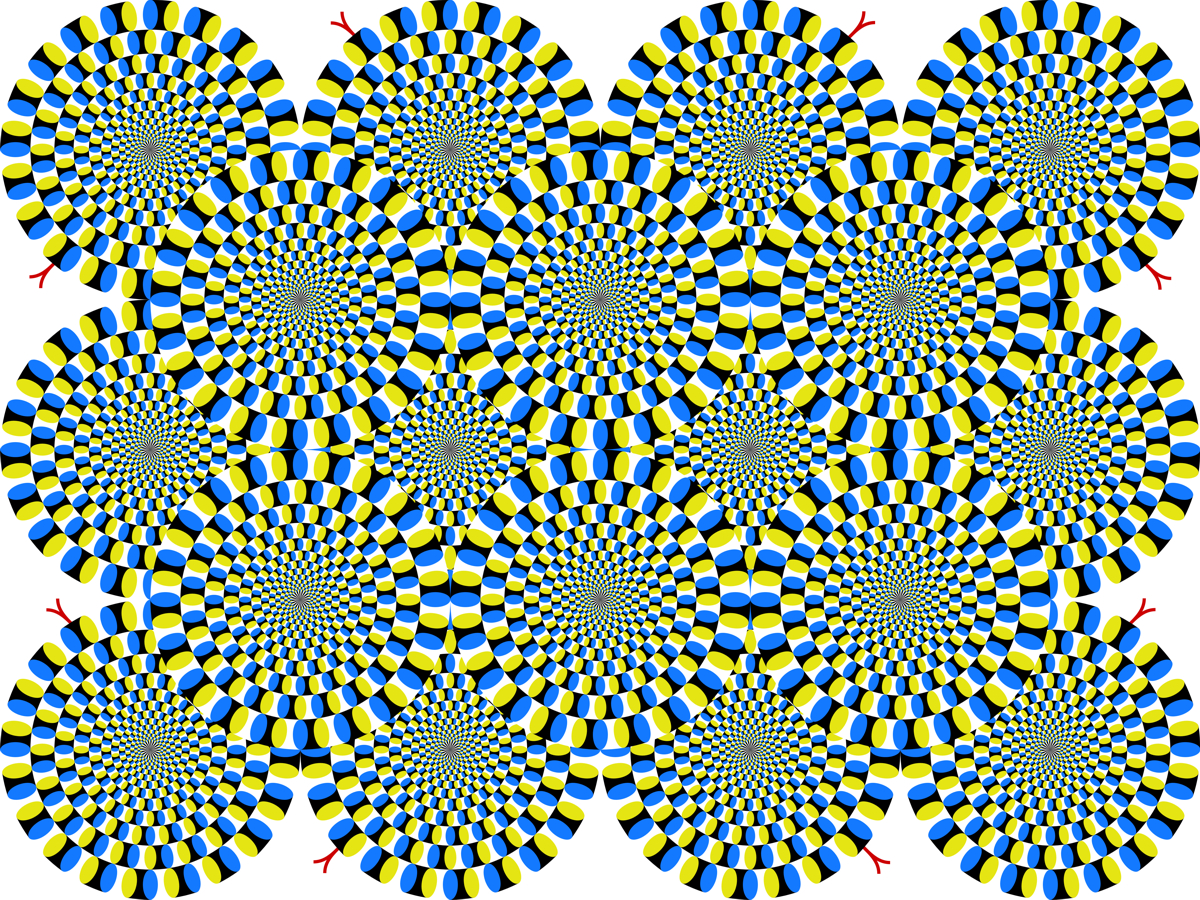
"Rotating snakes"
Each disk appears to rotate 'spontaneously' in the constant direction, from black to blue, white, yellow, back to black.
Copyright Akiyoshi Kitaoka 2003 (September 2) (updated February 16, 2013)
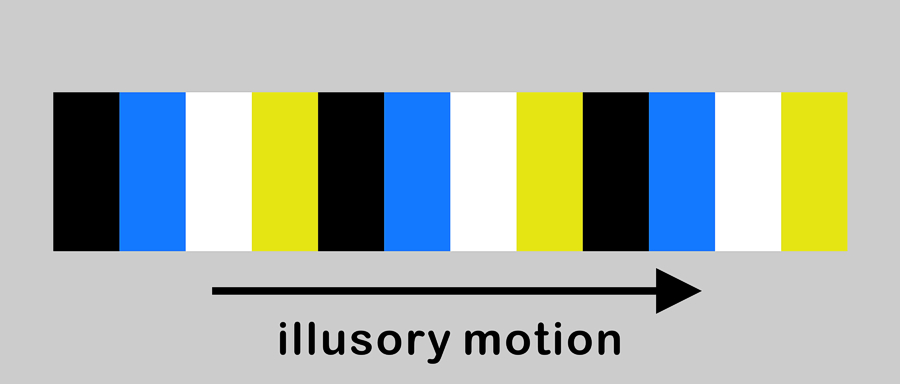
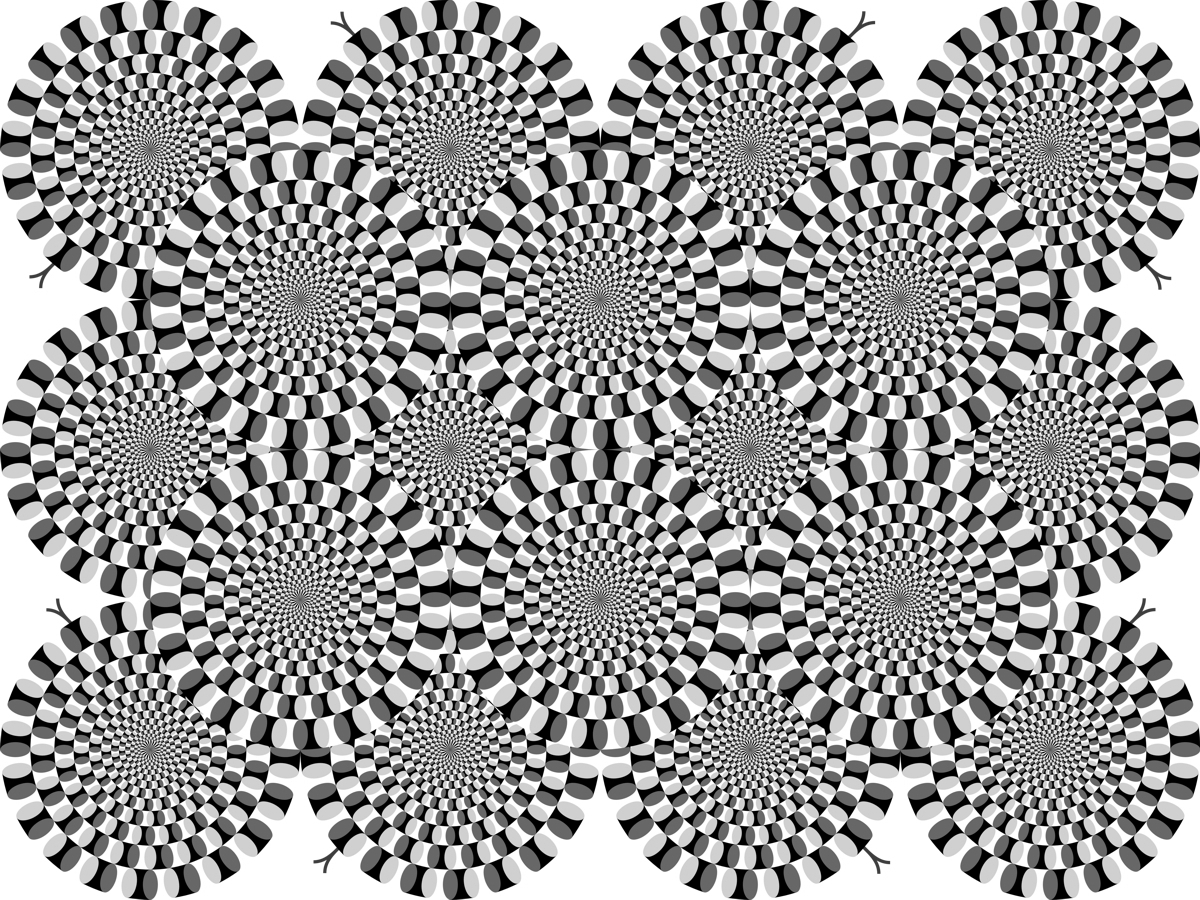
"Rotating snakes: a gray scale version"
Each disk appears to rotate 'spontaneously' in the constant direction, from black to dark gray, white, light gray, back to black.
Copyright Akiyoshi Kitaoka 2013 (May 27)
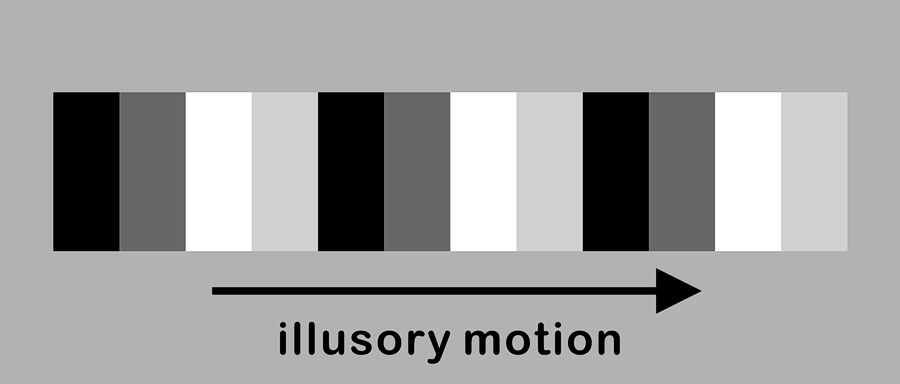
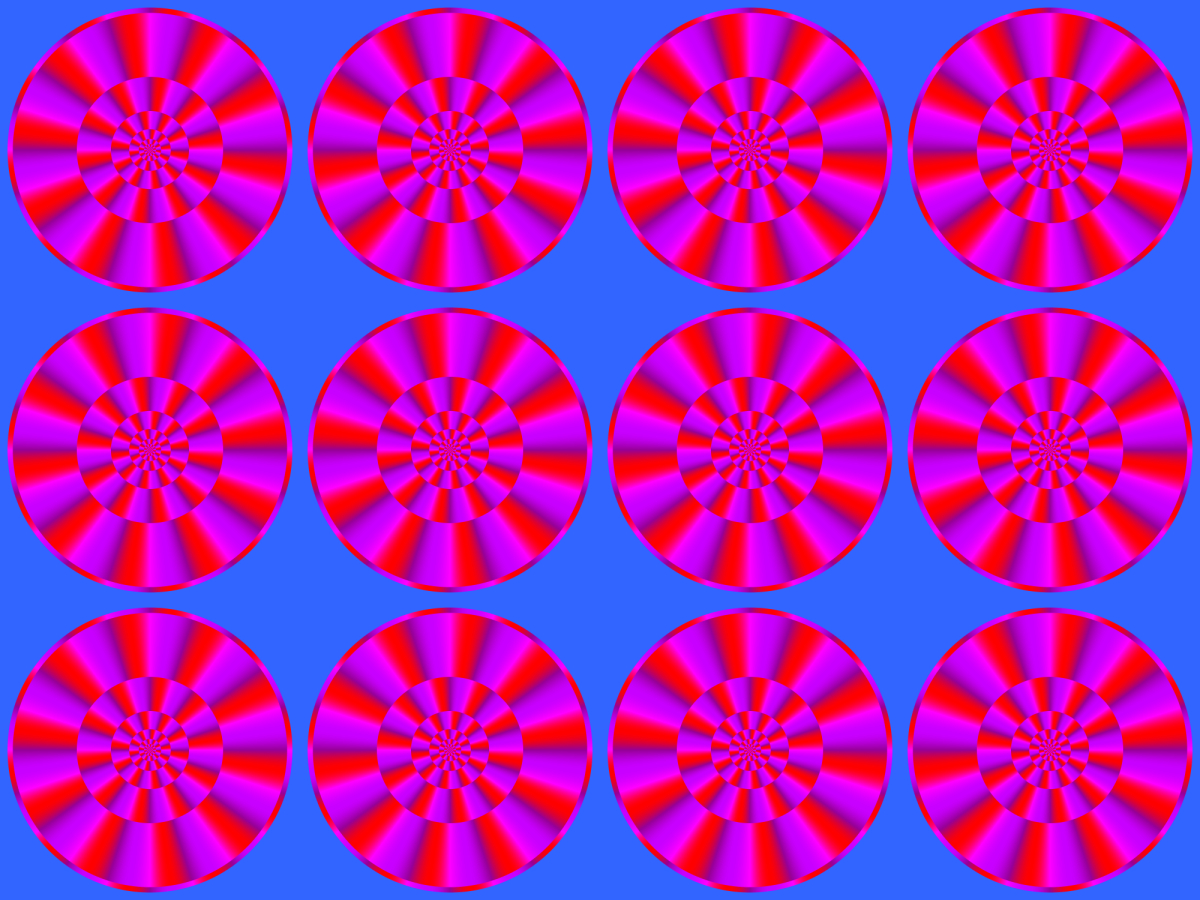
"Rotating red disks"
Each disk appears to rotate 'spontaneously' in the constant direction, from dark purple to purple, light red purple, red, back to dark purple.
Copyright Akiyoshi Kitaoka 2008 (December 18)
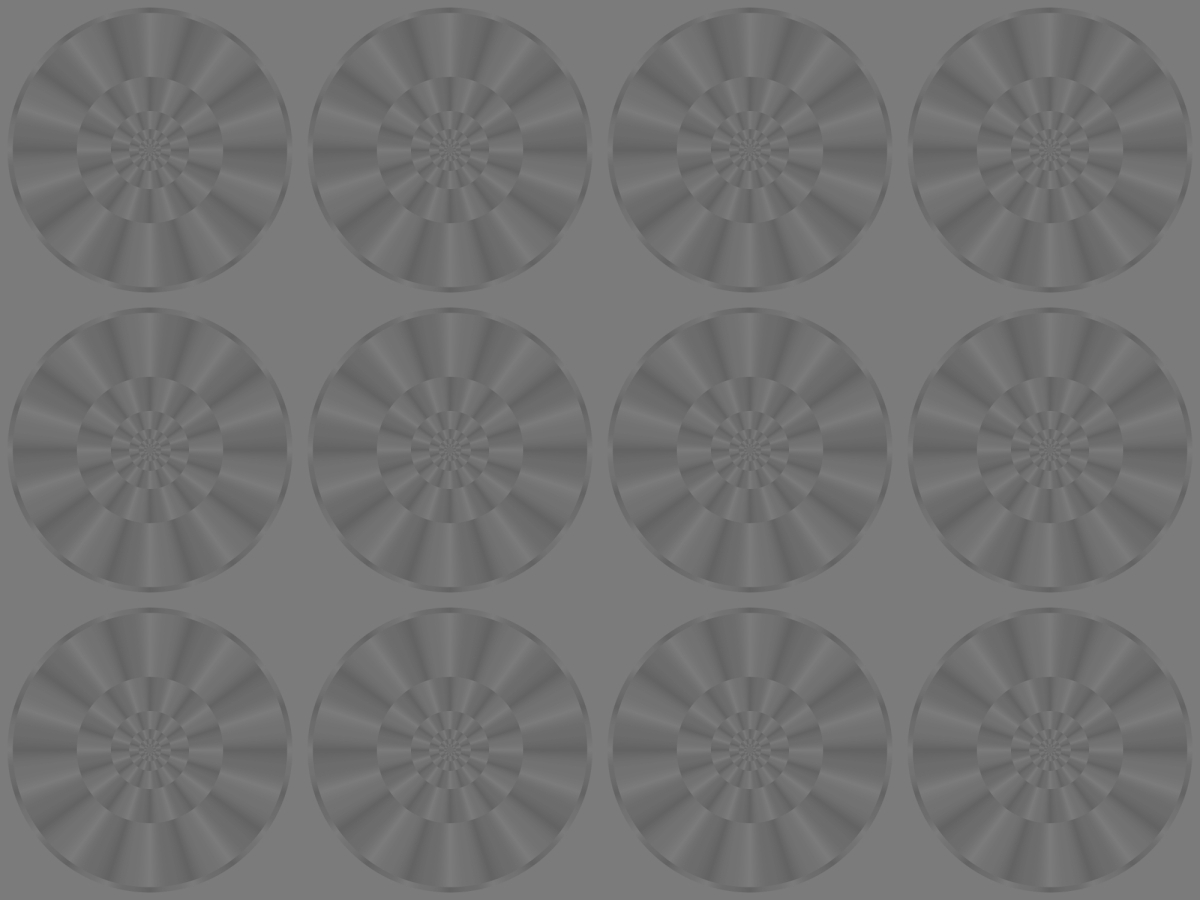
Gray scale versions give little or no effects.
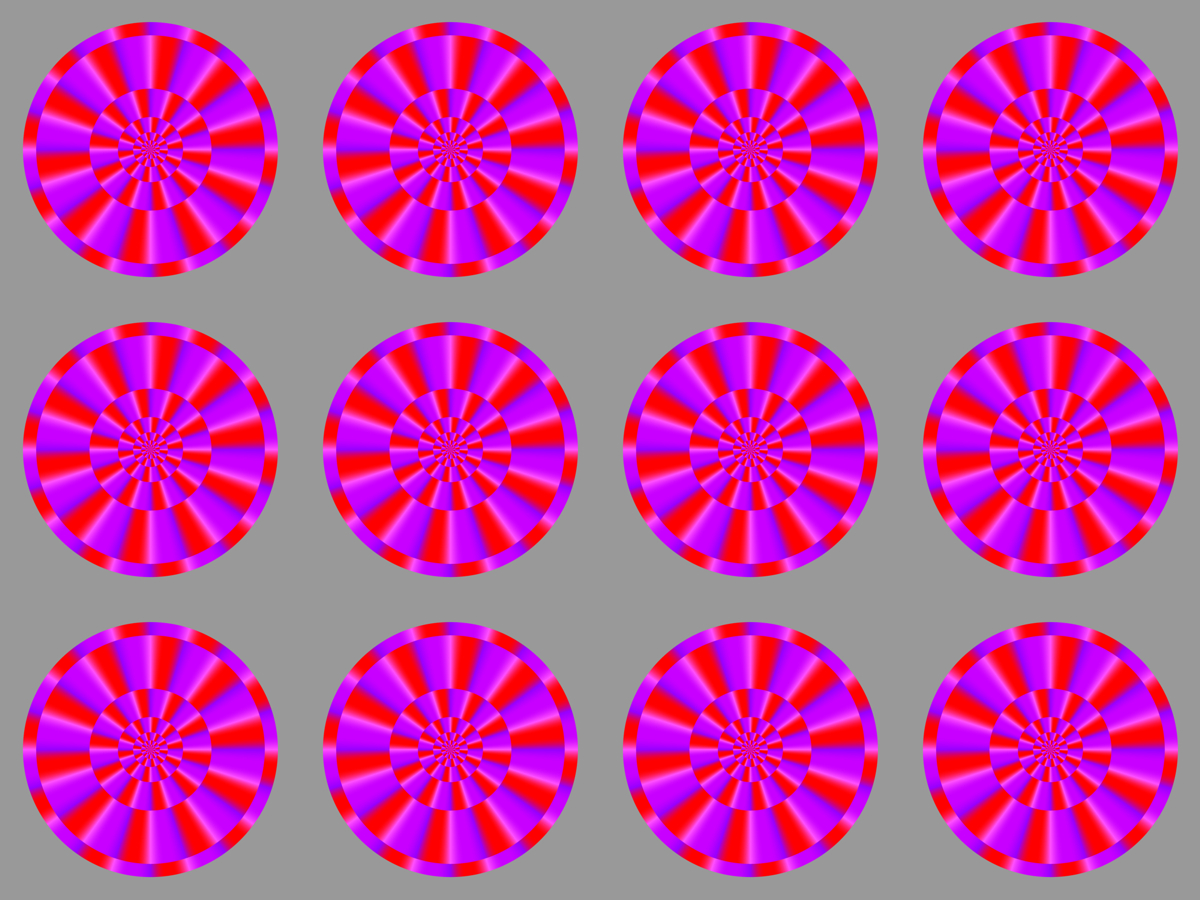
Copyright Akiyoshi Kitaoka 2013 (February 6)
Figure 6 of Kitaoka, A. (2014). Color-dependent motion illusions in stationary images and their phenomenal dimorphism. Perception, 43(9), 914-925.
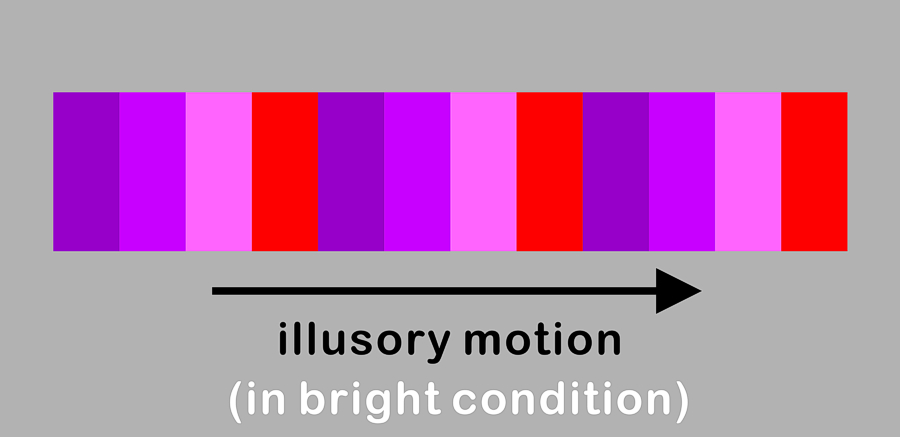
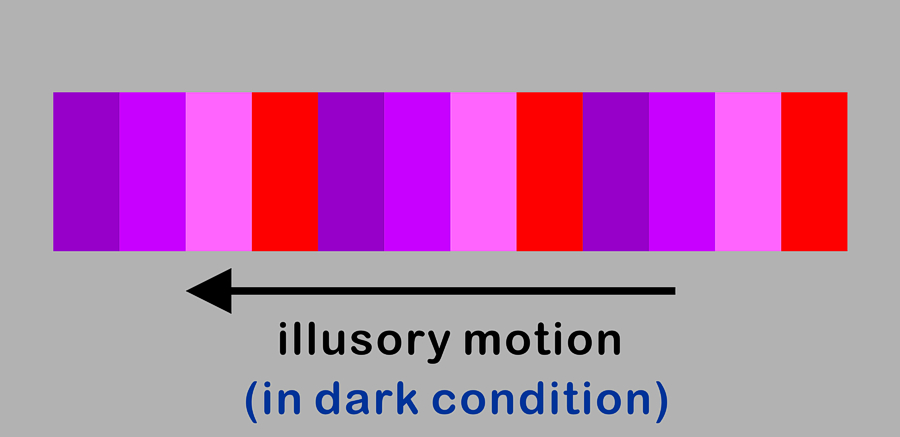
"Color-dependent version of Rotating snakes"
Each disk appears to rotate 'spontaneously' in the constant direction, from dark purple to purple, light red purple, red, back to dark purple.
Copyright Akiyoshi Kitaoka 2009 (September 6)
1. Fraser and Wilcox (1979)
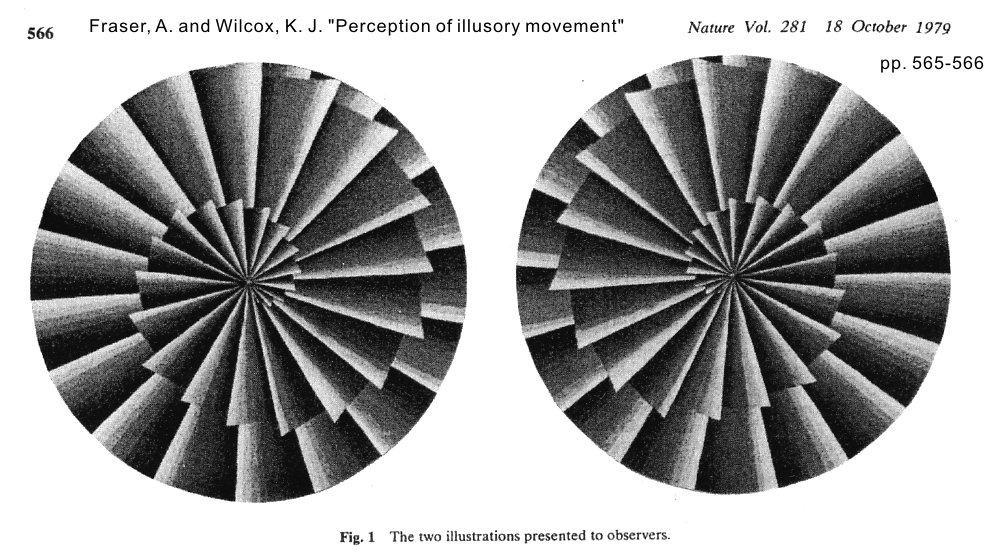
Fraser, A. and Wilcox, K. J. (1979) Perception of illusory movement. Nature, 281, 565-566.
Ambiguity in the direction of illusory rotation
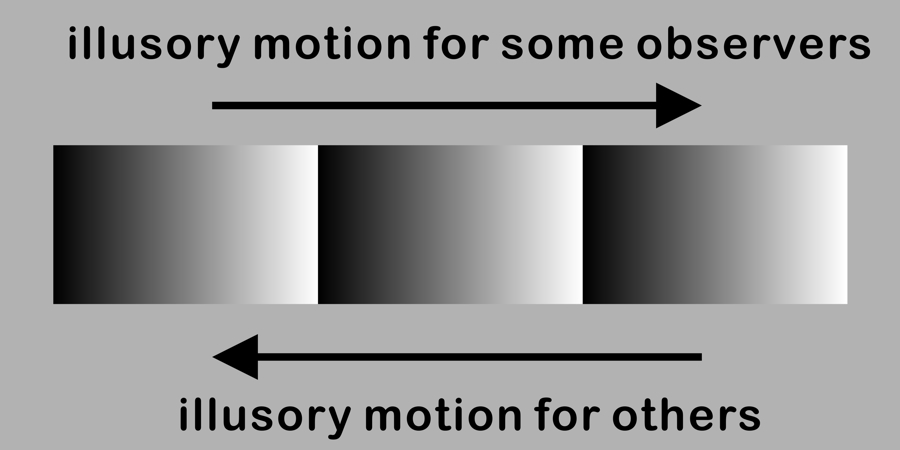
cf.
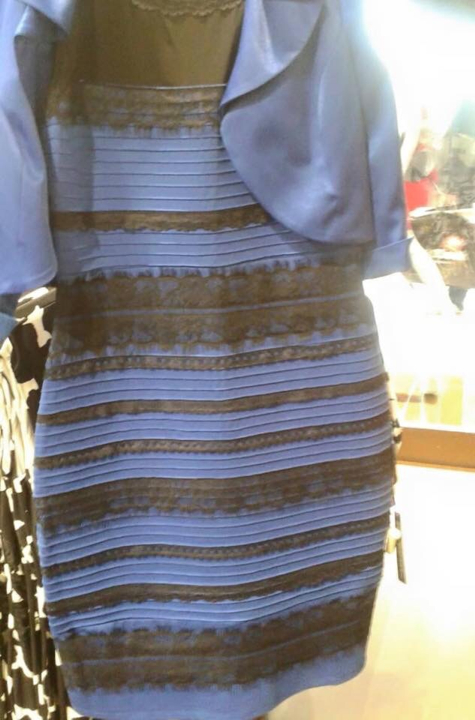
"Dress illusion" (February 2015) http://swiked.tumblr.com/post/112073818575/guys-please-help-me-is-this-dress-white-and
Ambiguity in the perceived color combination
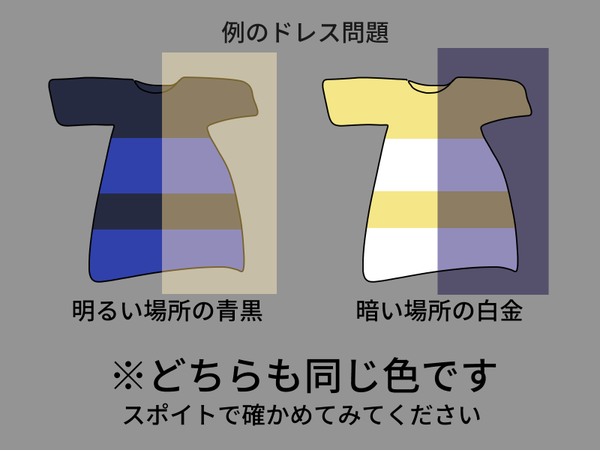
Explanation given by @budoucha (Twitter) (presented with permission)

Inter Milan illusion
Copyright Akiyoshi Kitaoka 2015 (March 2)
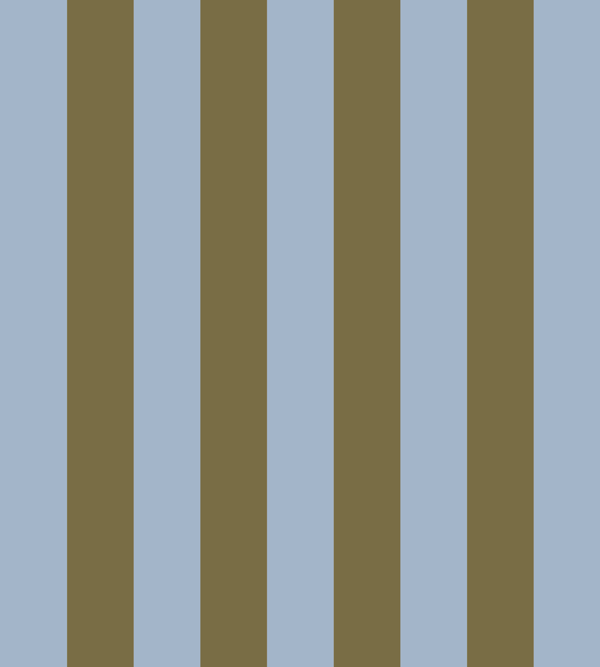
If you have interest in this topic, please visit my exhibition.
"Color Illusions Accompanied by Color Constancy Phenomena"
by Akiyoshi Kitaoka (Ritsumeikan University)

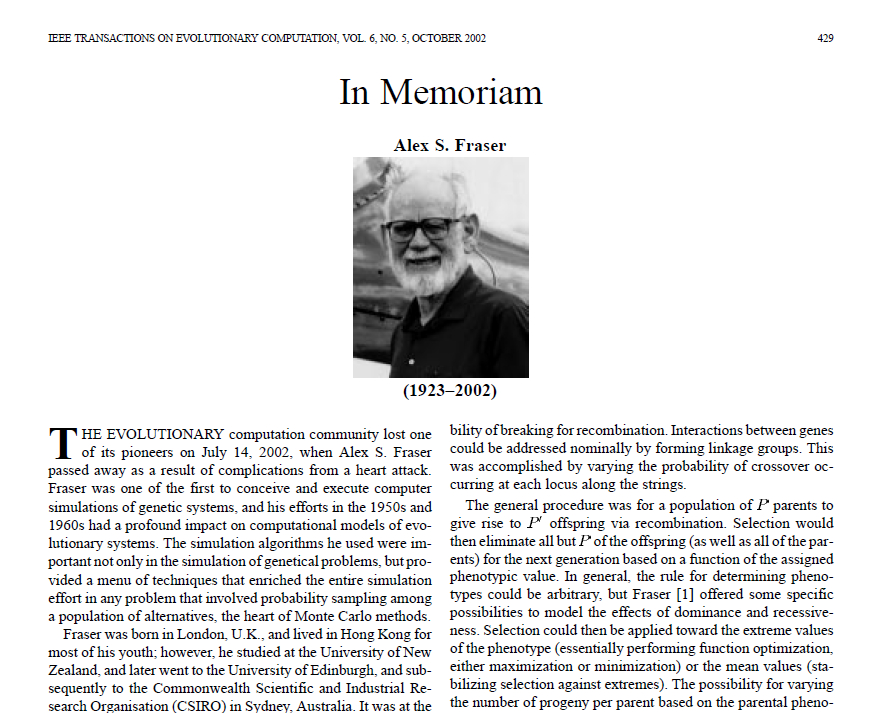
Fogel, D. B. (2002). In Memoriam: Alex S. Fraser (1923–2002). IEEE Transactions on Evolutionary Computation, 6(5), 429-430.
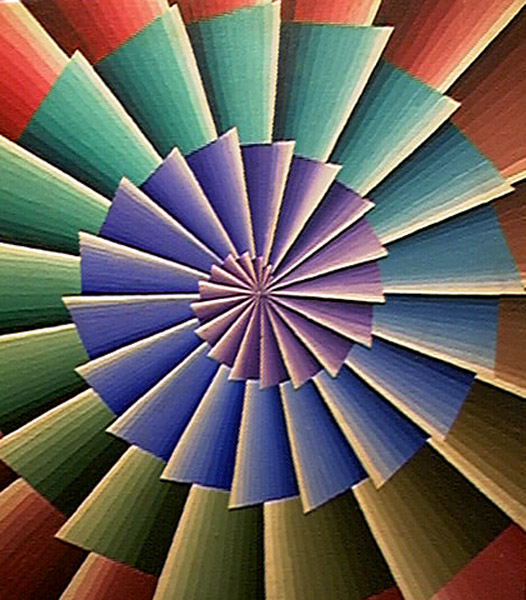
Alex Fraser's original work
Adopted with permission from Alan Fraser (2006) "Alex Fraser, Geneticist and Painter" http://doctoralexfraser.blogspot.jp/
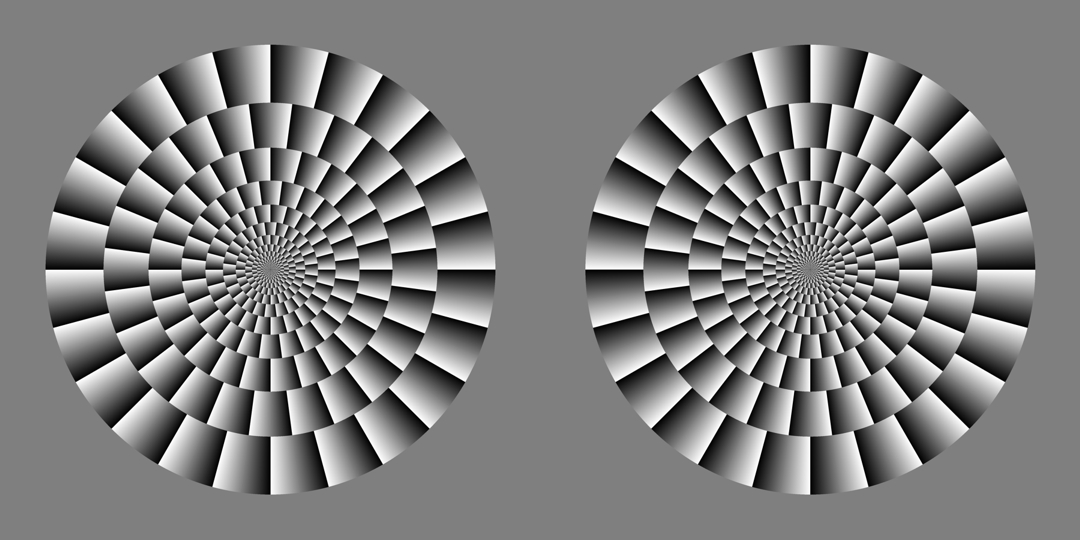
A 'simplified' image showing ambiguation
Darkening disambiguation
Darkening disambiguation does not require luminance gradient
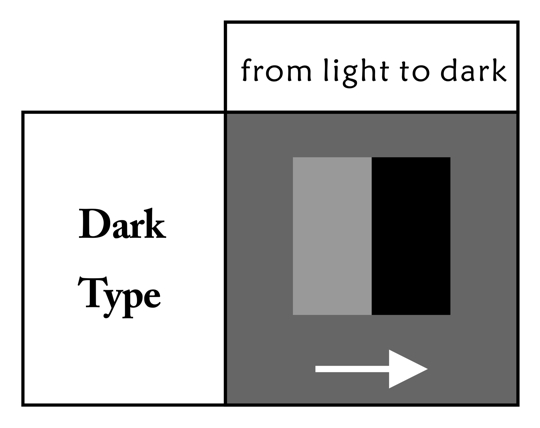
Kitaoka, A. (2012). The Fraser-Wilcox illusion and its extension. Perception 41 ECVP Abstract Supplement, page 91 (Poster September 3, 2012). Poster PDF
Disambiguation by lowering contrast
Copyright Robert Sekuler
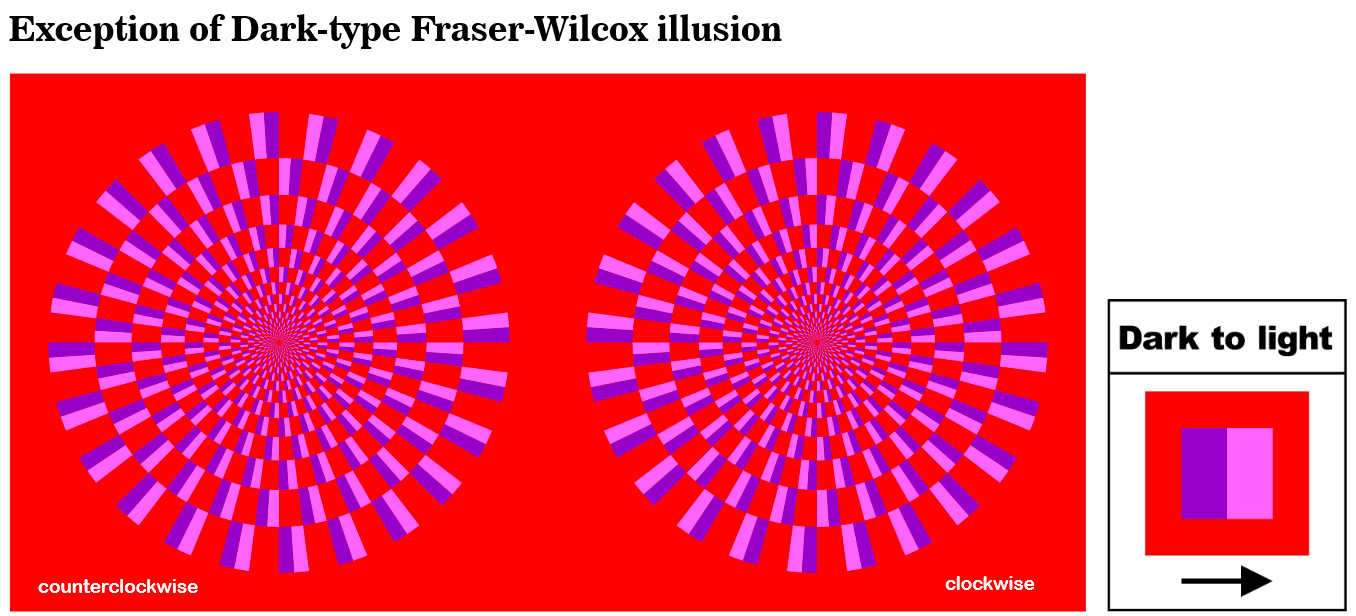
Kitaoka, A. (2012). The Fraser-Wilcox illusion and its extension. Perception 41 ECVP Abstract Supplement, page 91 (Poster September 3, 2012). Poster PDF
2. Faubert and Herbert (1999)
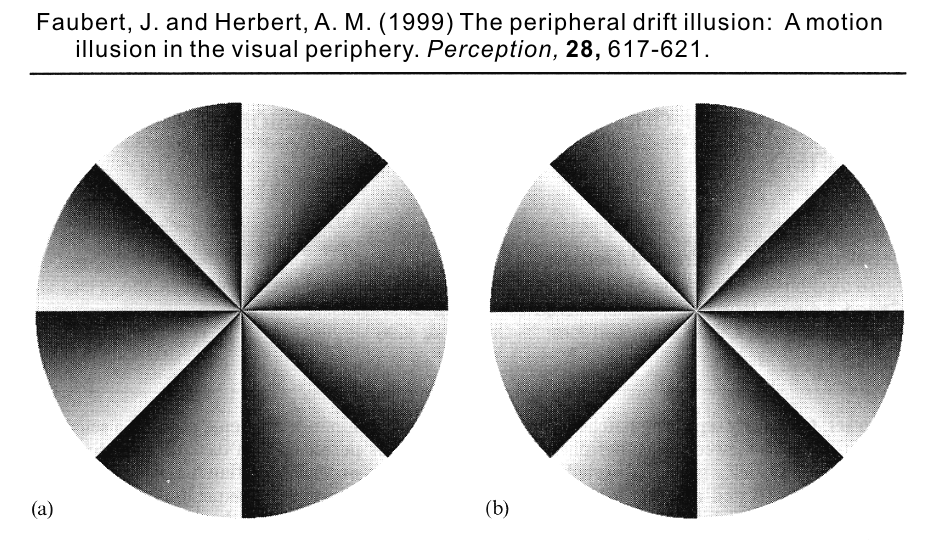
Faubert, J. and Herbert, A. M. (1999) The peripheral drift illusion: A motion illusion in the visual periphery. Perception, 28, 617-621.
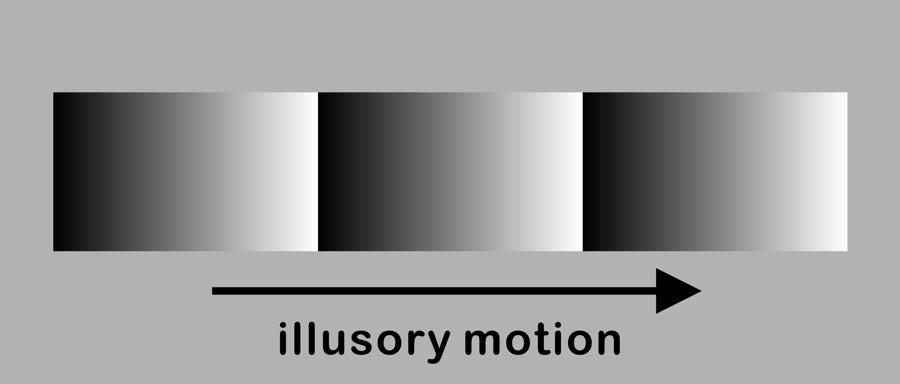
3. Naor-Raz and Sekuler (2000)
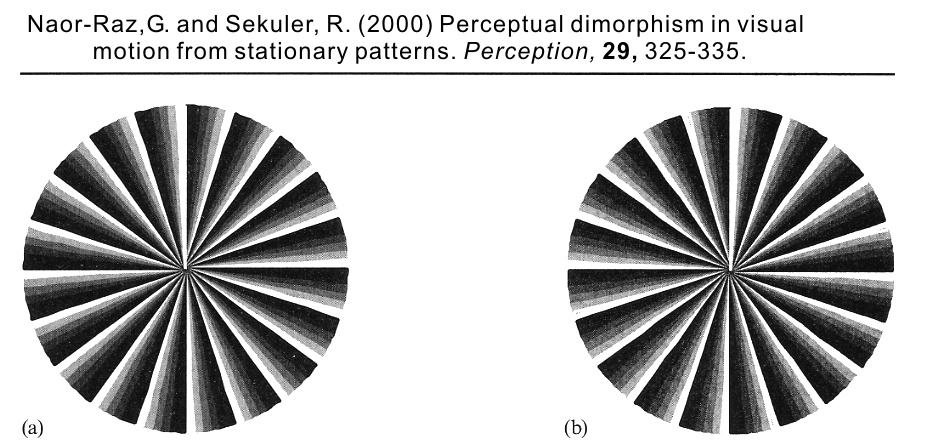
Naor-Raz, G. and Sekuler, R. (2000) Perceptual dimorphism in visual motion from stationary patterns. Perception, 29, 325-335.
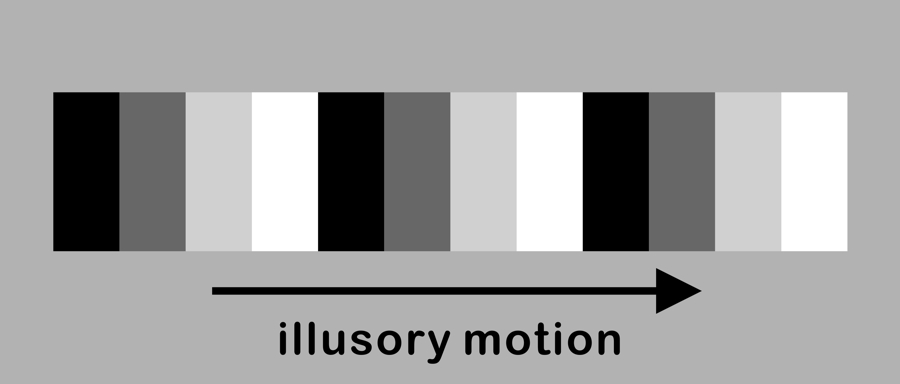
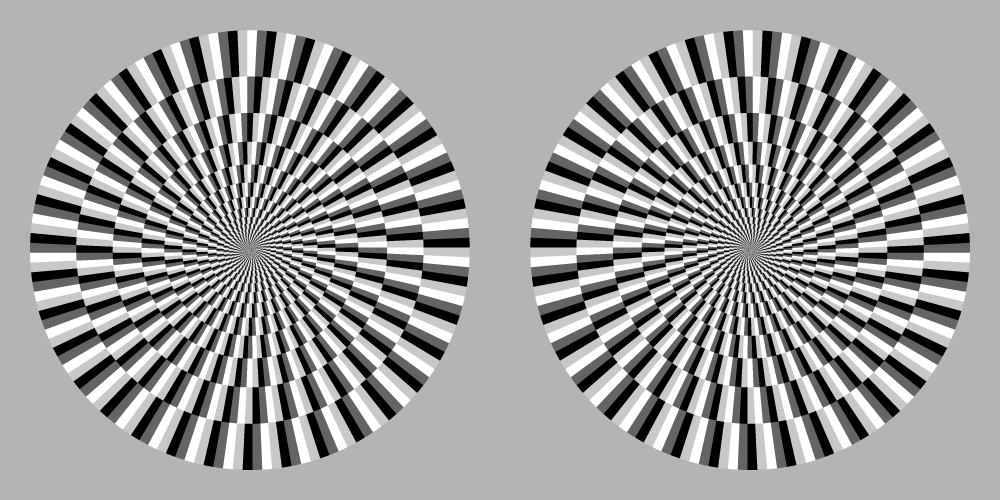
Kitaoka, A. and Ashida, H. (2003) Phenomenal characteristics of the peripheral drift illusion. VISION (Journal of the Vision Society of Japan), 15, 261-262. PDF

Perceptual dimorphism in motion direction can be explained assuming two
independent illusions canceling each other in the original Fraser-Wilcox
illusion.
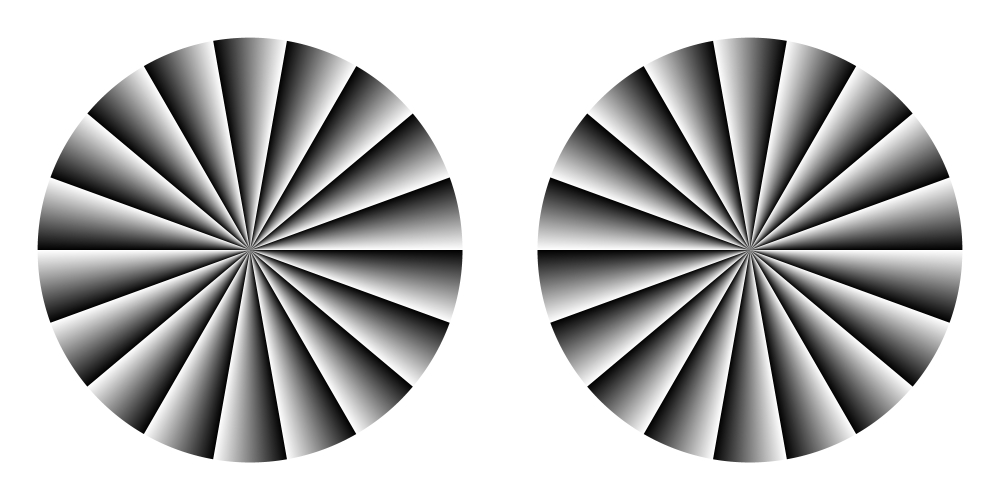
"Dark to light" (within luminance gradient) might be stronger.
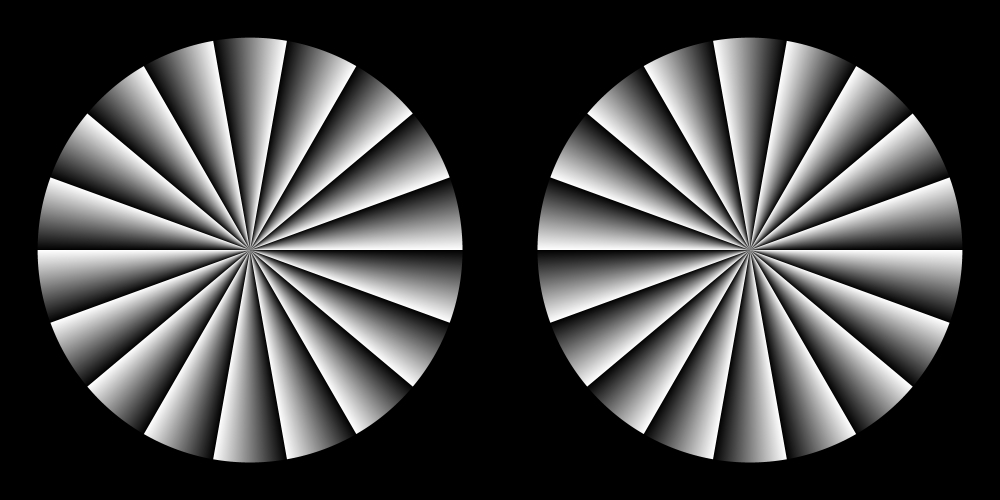
"Light to dark" might be stronger.
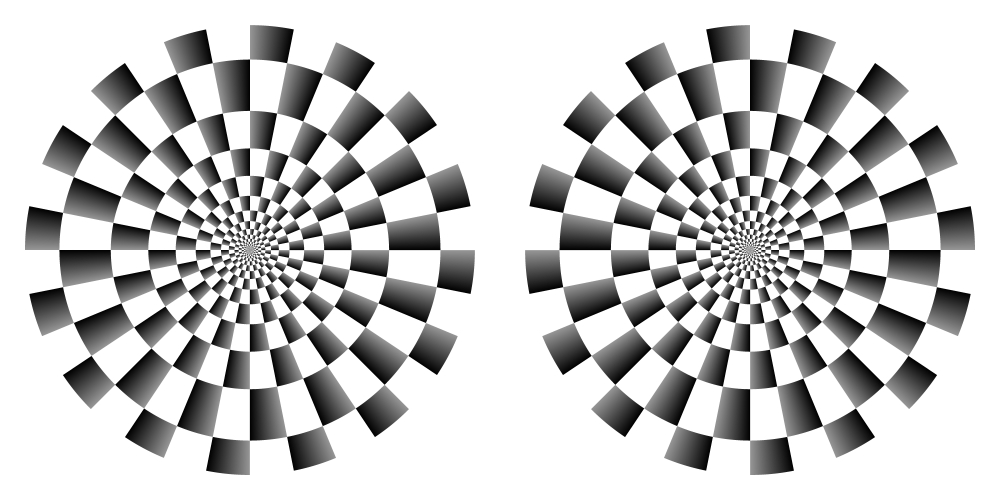
"Dark to light"
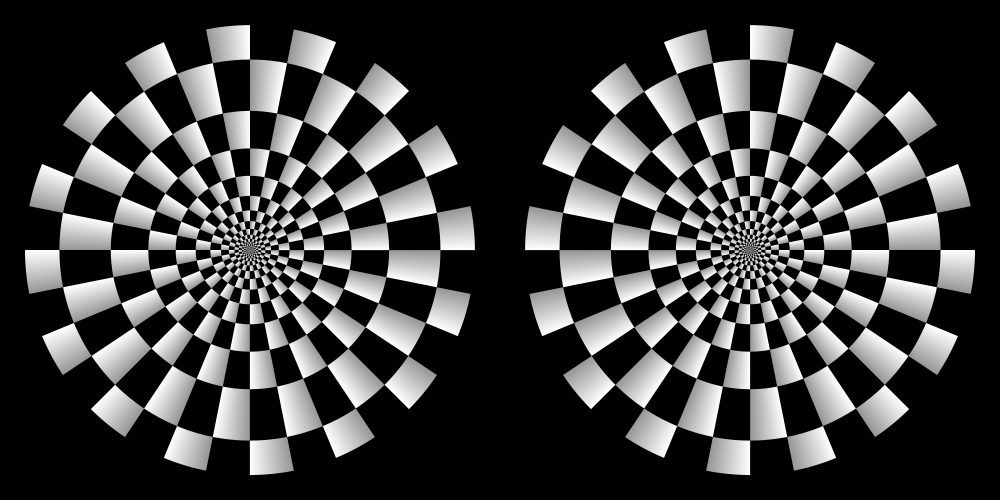
"Light to dark"
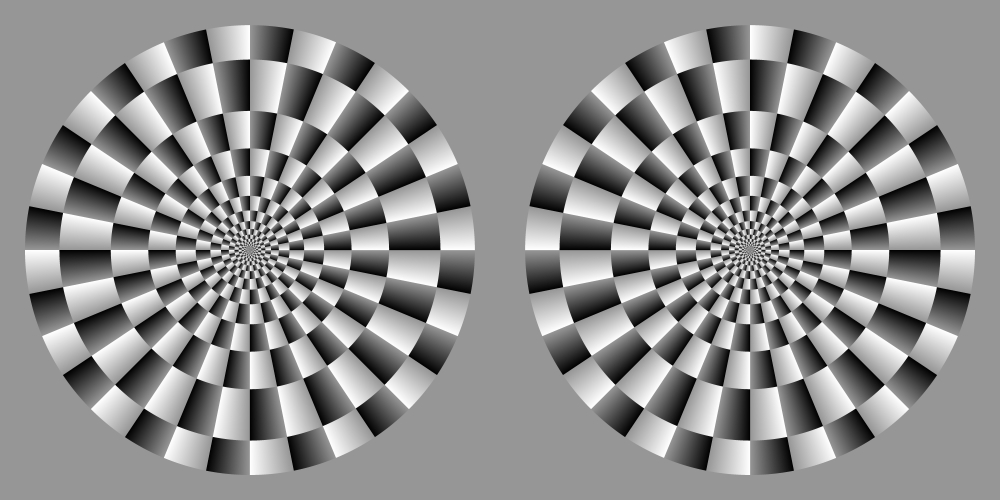
"Dark to light" and "light to dark" are combined
Luminance gradient type

Empirical observation that color enhances the illusion in some conditions.
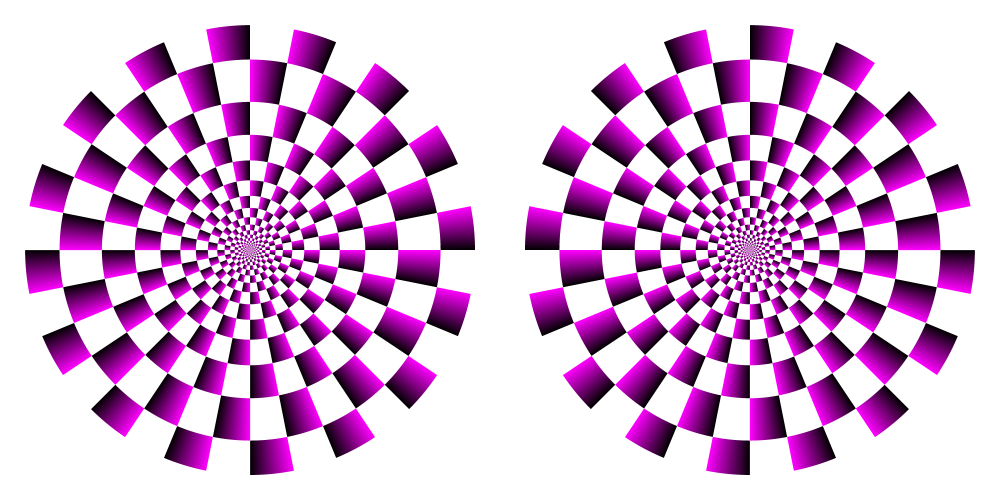
Observation 1. The illusion from dark to light is enhanced by red or blue.
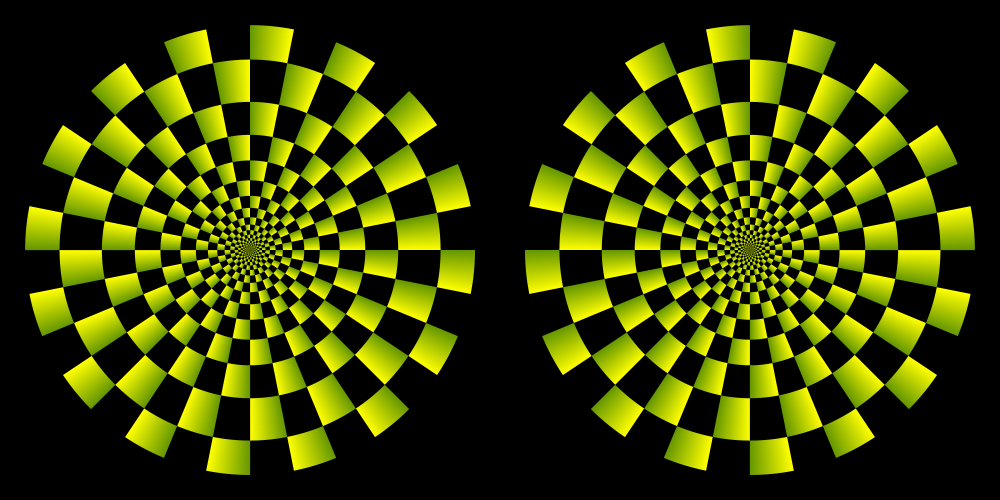
Observation 2. The illusion from light to dark is enhanced by yellow or green.
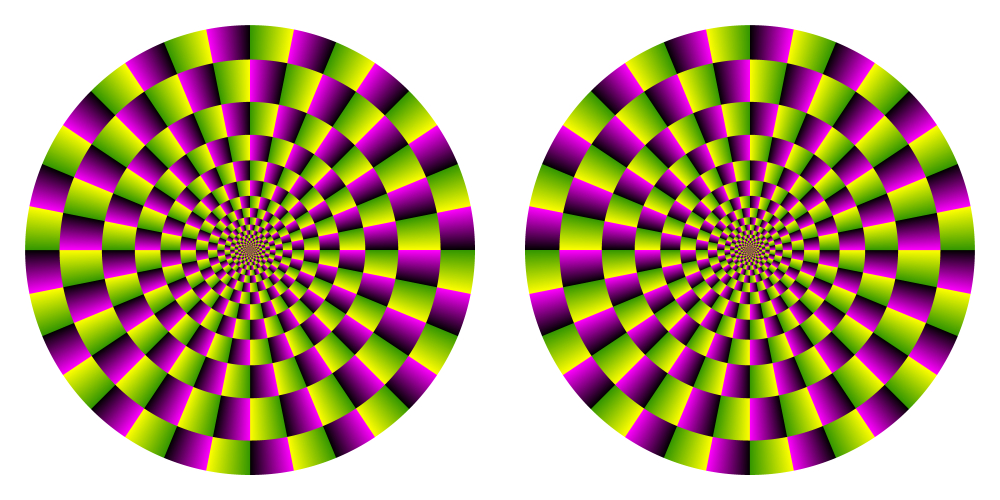
Observation 3. The illusion from dark to light is enhanced by red or blue, while the illusion from light to dark is enhanced by yellow or green. Both illusions work additively.
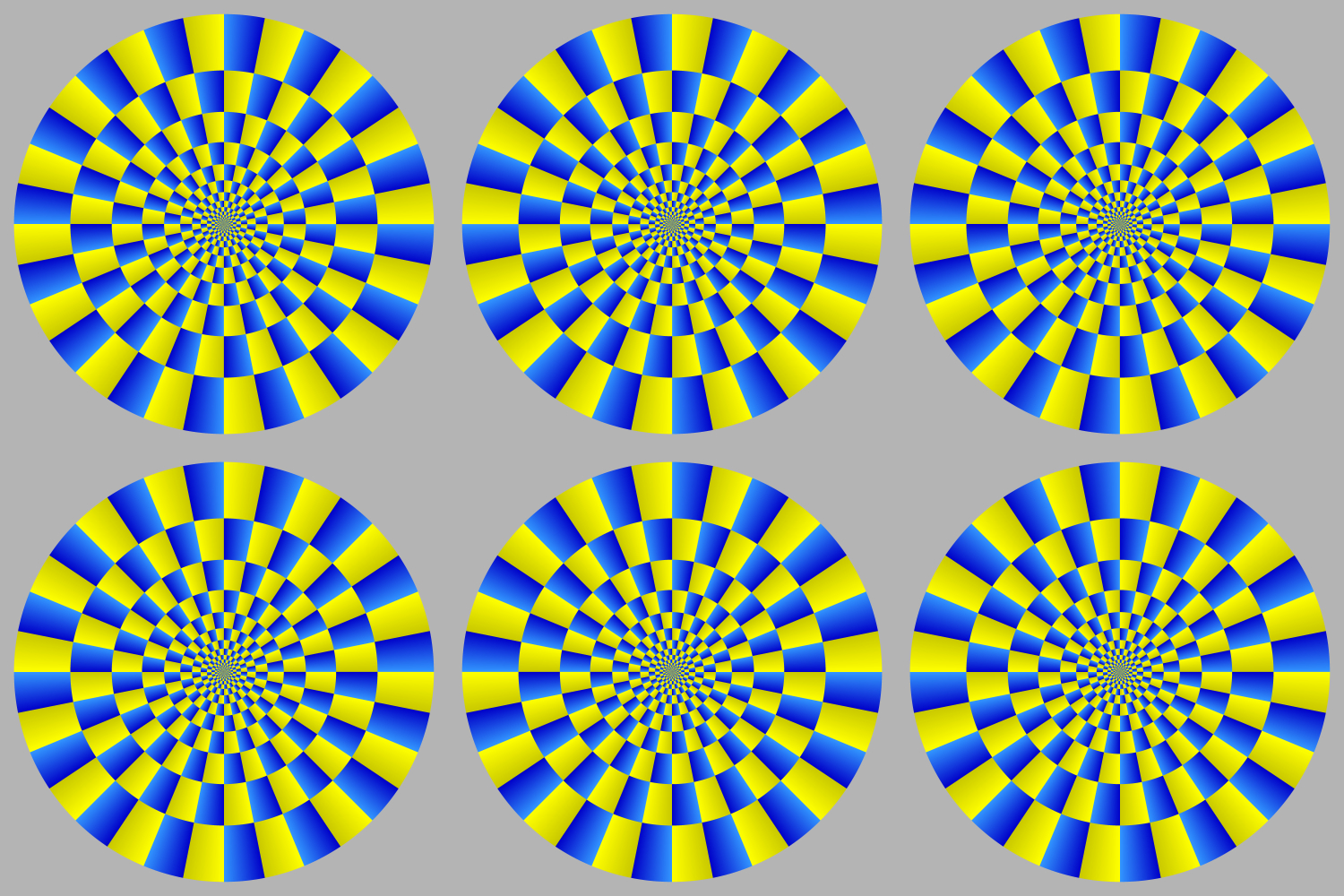
The upper-left, upper-right, and lower-middle disks appear to rotate counterclockwise
while the rest clockwise.
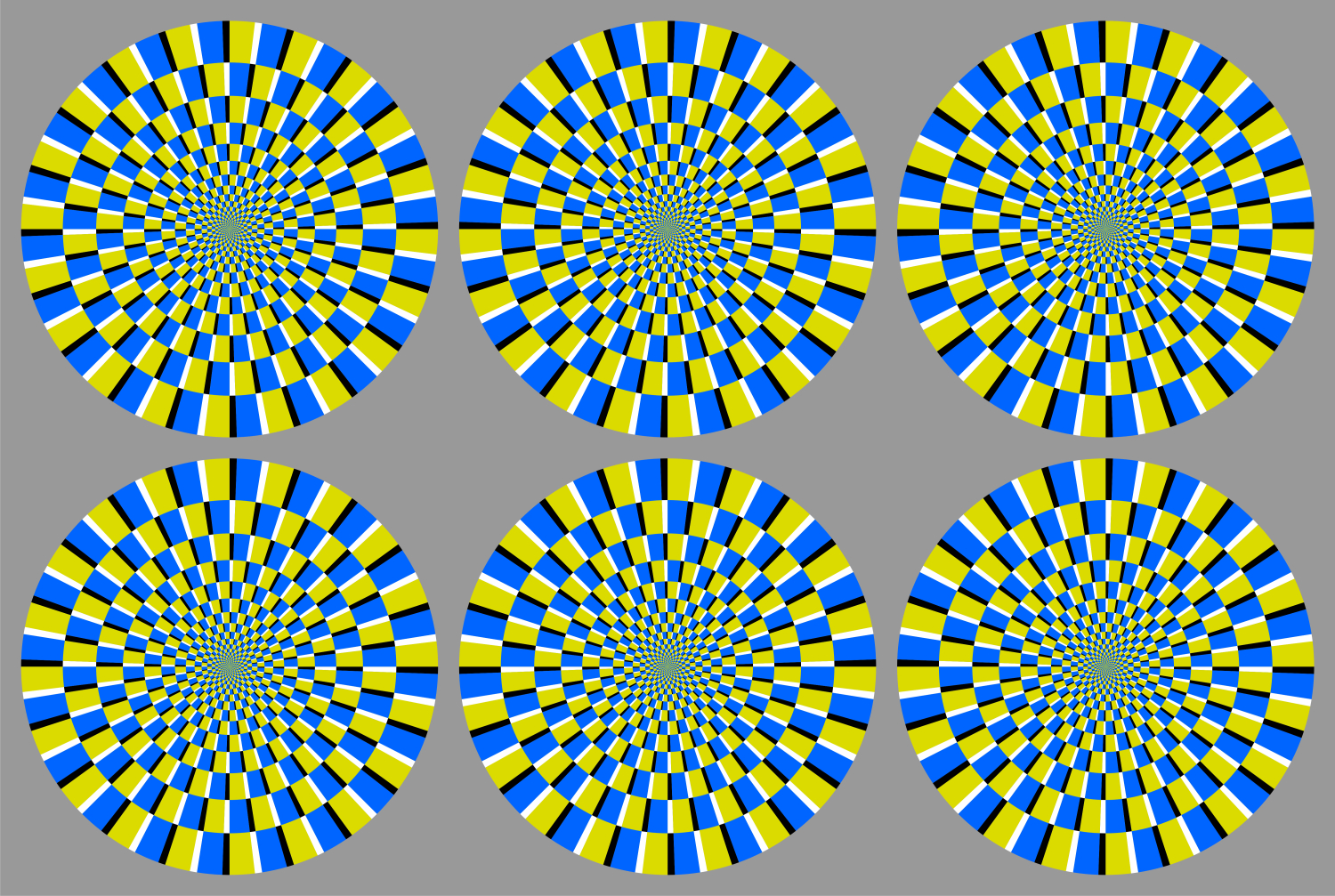
The upper-left, upper-right, and lower-middle disks appear to rotate counterclockwise
while the rest clockwise.
Luminance step type (Type II) included
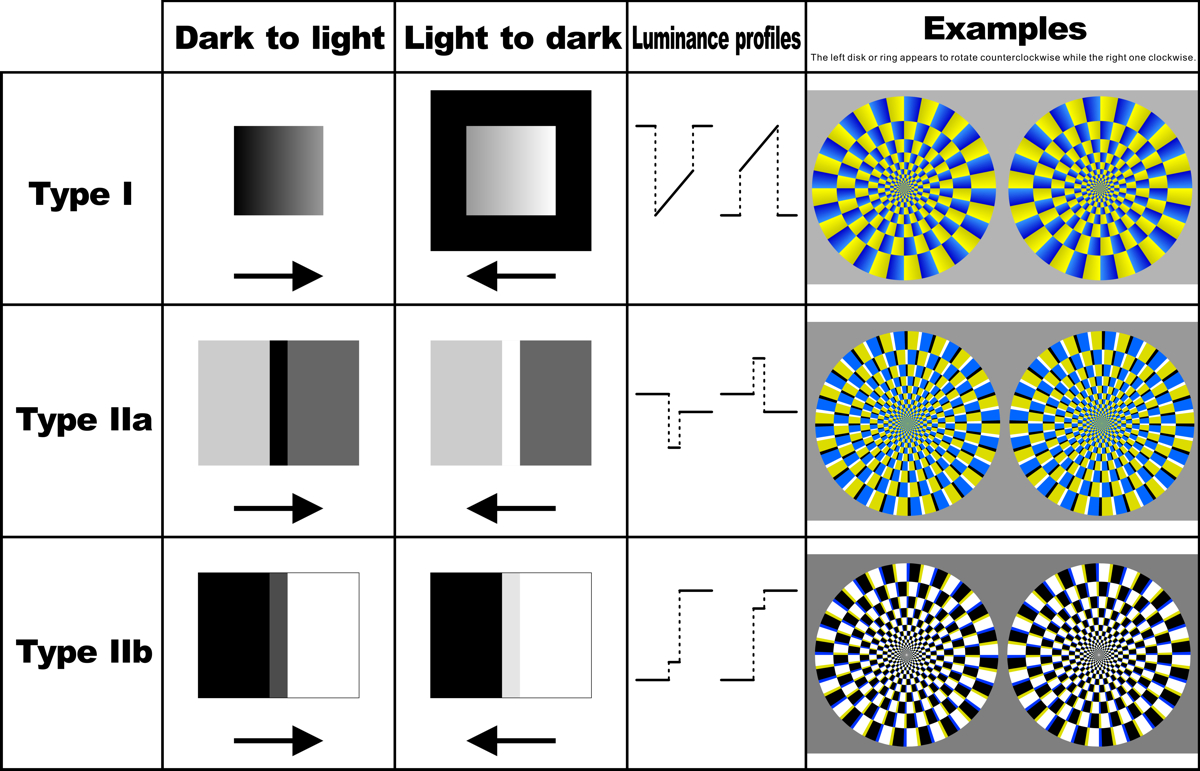
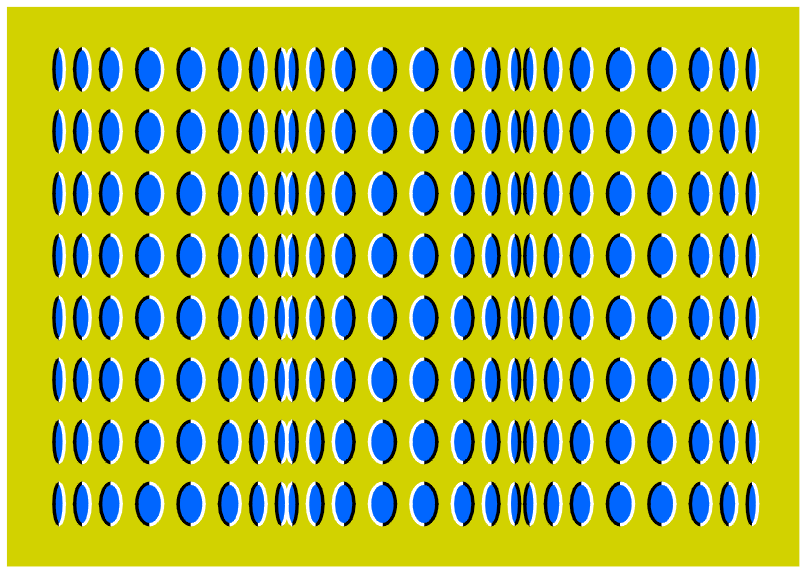
"Rollers"
Rollers appear to rotate without effort. On the other hand, they appear to rotate in the opposite direction when observers see this image keeping blinking.
Copyright A.Kitaoka 2004 (April 20)
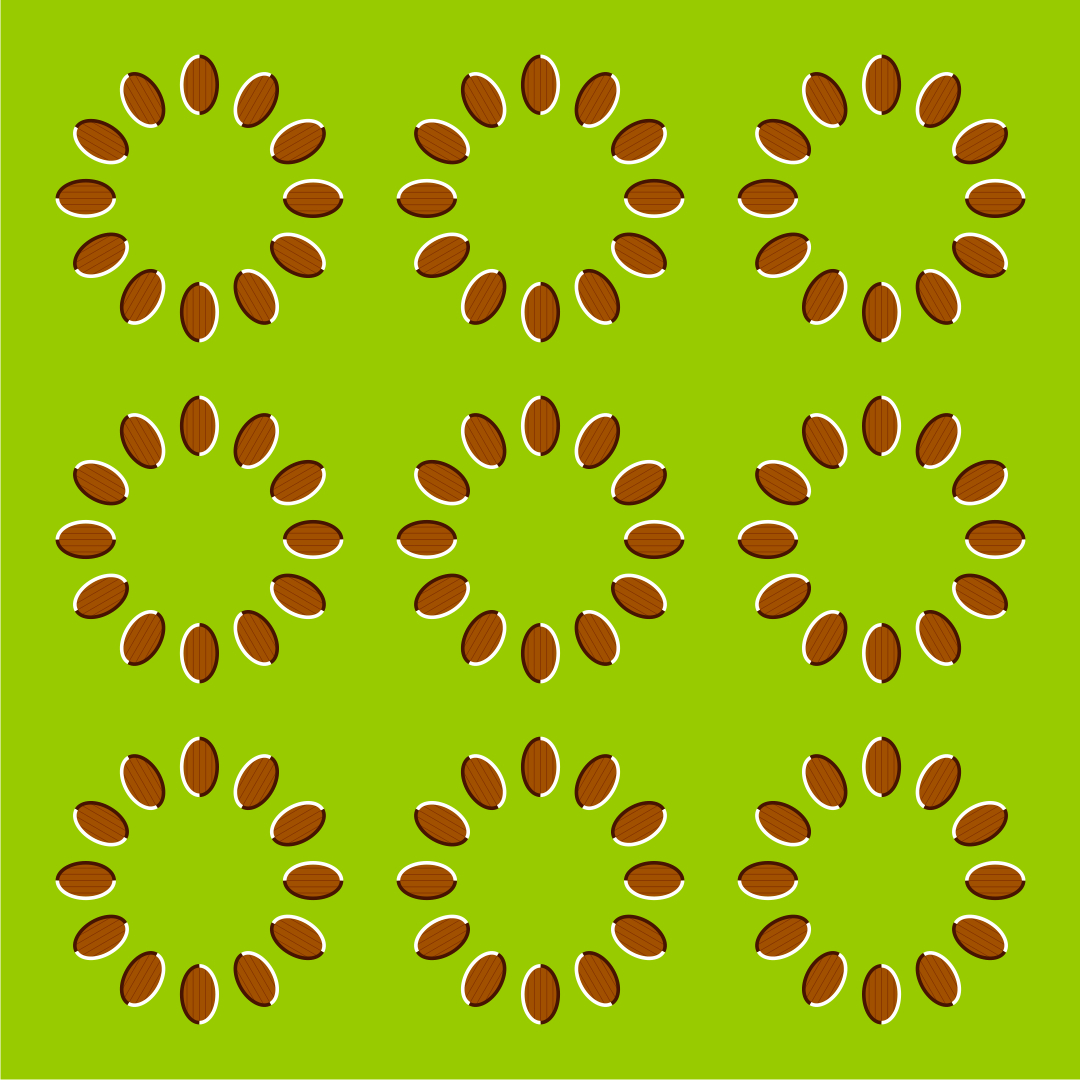
"Dongururin"*
*Rotation of donguri (acorns). "Gururin" means rotation.
Rings of donguri appear to rotate.
Copyright A.Kitaoka 2003 (July 3, 2003)

"Rotating snakes"
Each disk appears to rotate 'spontaneously' in the constant direction, from black to blue, white, yellow, back to black.
Copyright Akiyoshi Kitaoka 2003 (September 2) (updated February 16, 2013)
Age and illusion
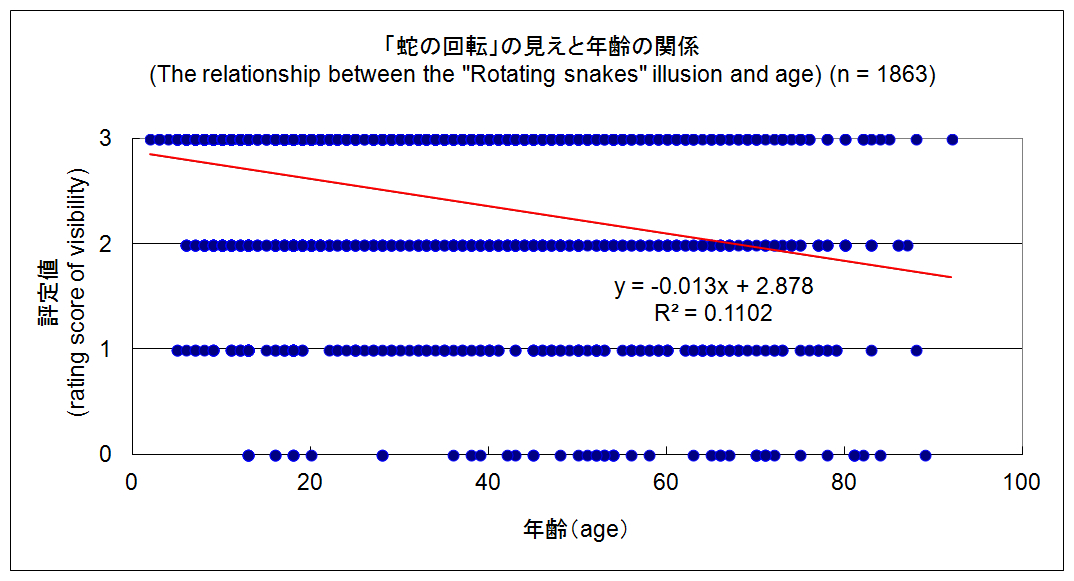
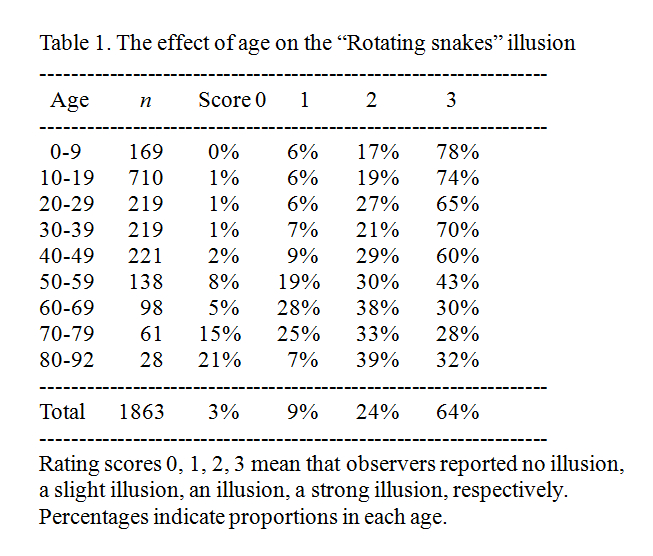
Another luminance step type
| Type | Basic illusion that motion direction is from dark to light |
Basic illusion that motion direction is from light to dark |
Examples (click the thumbnail) |
| III |   |
 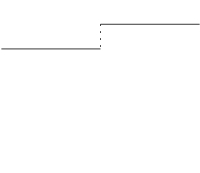 |
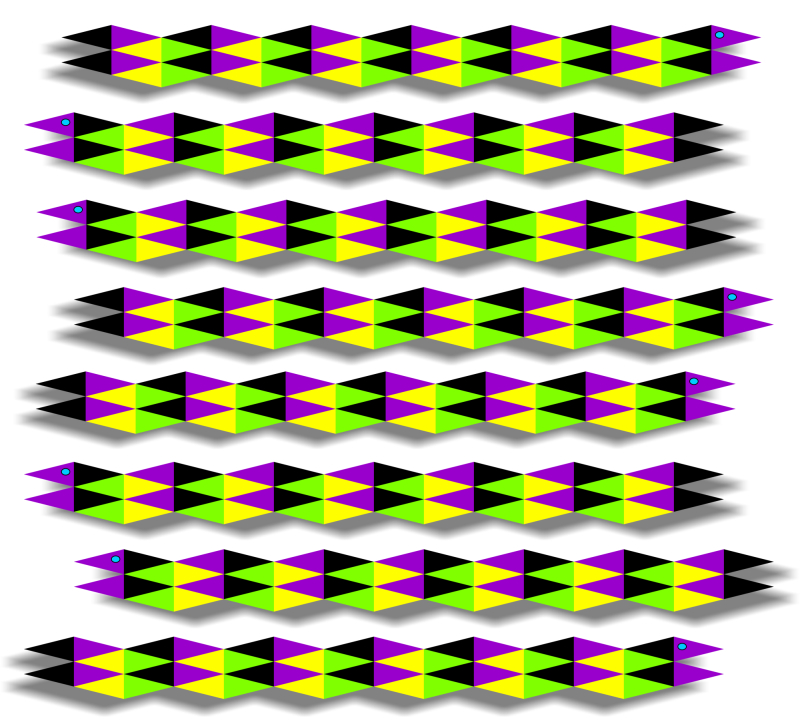
"Moving snakes with shadows"
Snakes appear to move horizontally.
Copyright Akiyoshi Kitaoka 2009 (June 7)
Highlight and shadow type
| Type | Basic illusion that motion direction is from dark to light |
Basic illusion that motion direction is from light to dark |
Examples (click the thumbnail) |
| IV new! |
 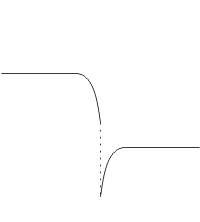 |
 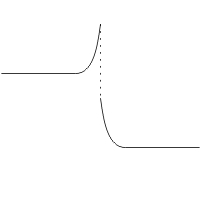 |
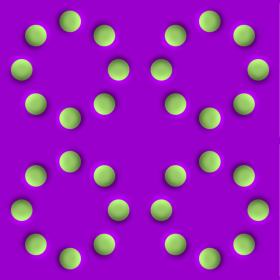 |
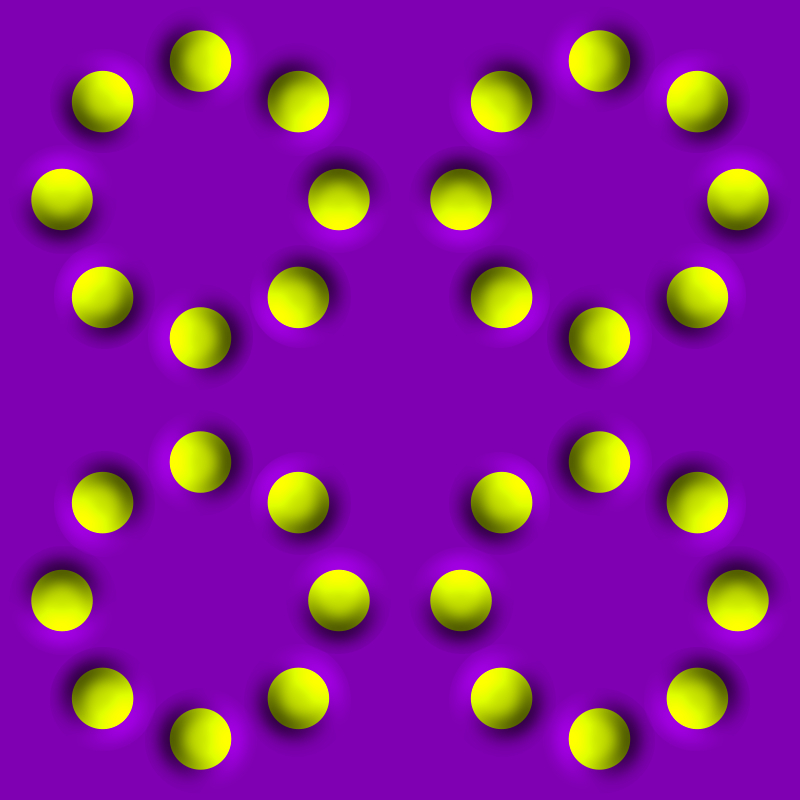
"Rotating tablets"
Rings appear to rotate.
Copyright Akiyoshi Kitaoka 2011 (July 14)
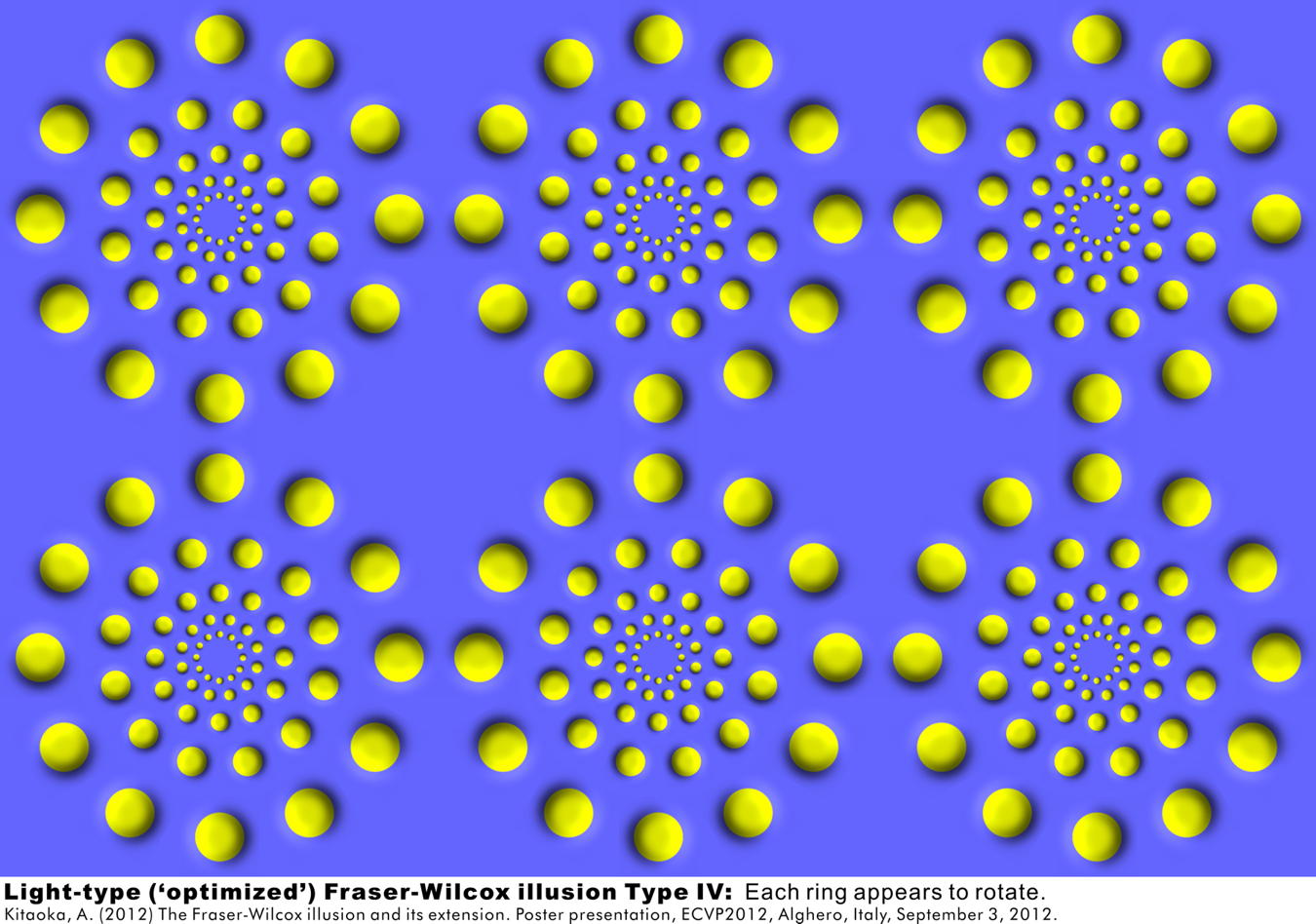
Color-dependent type
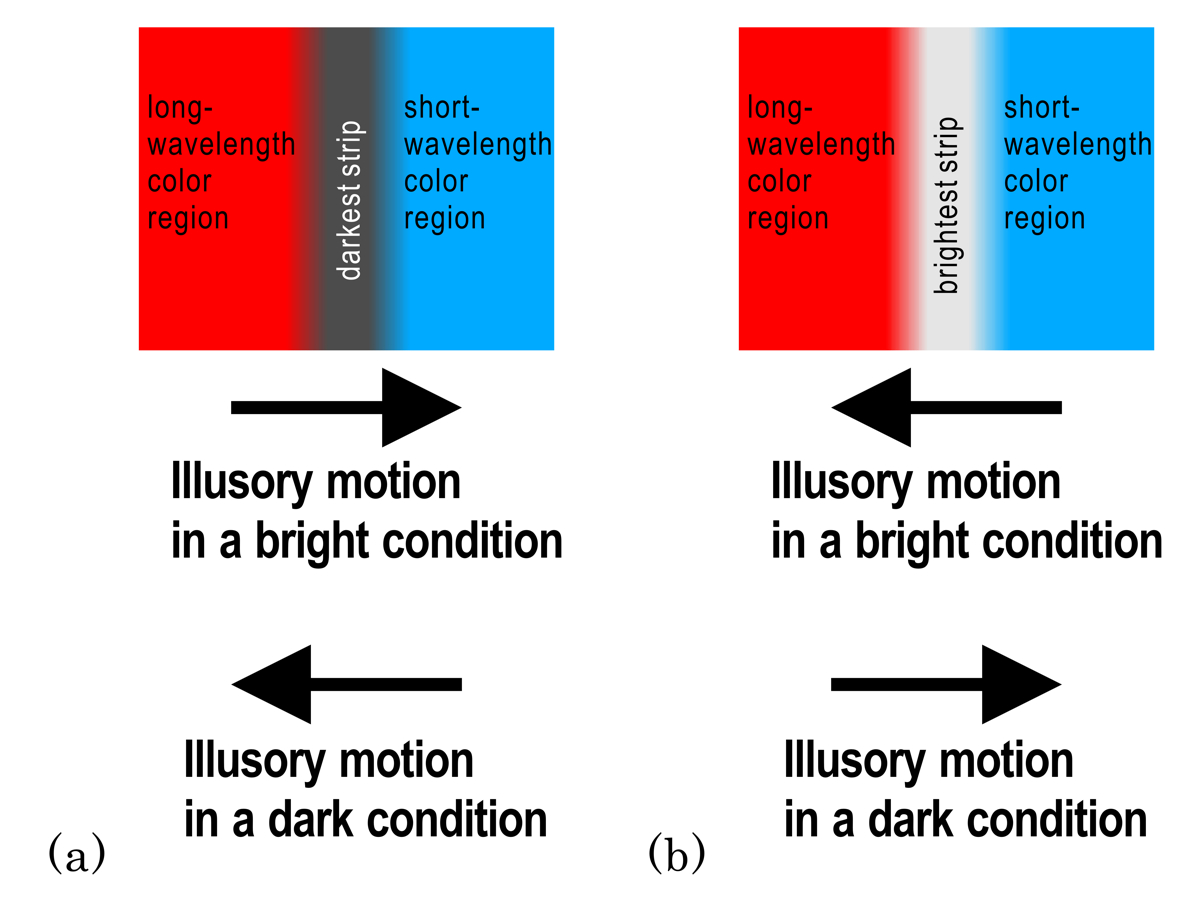
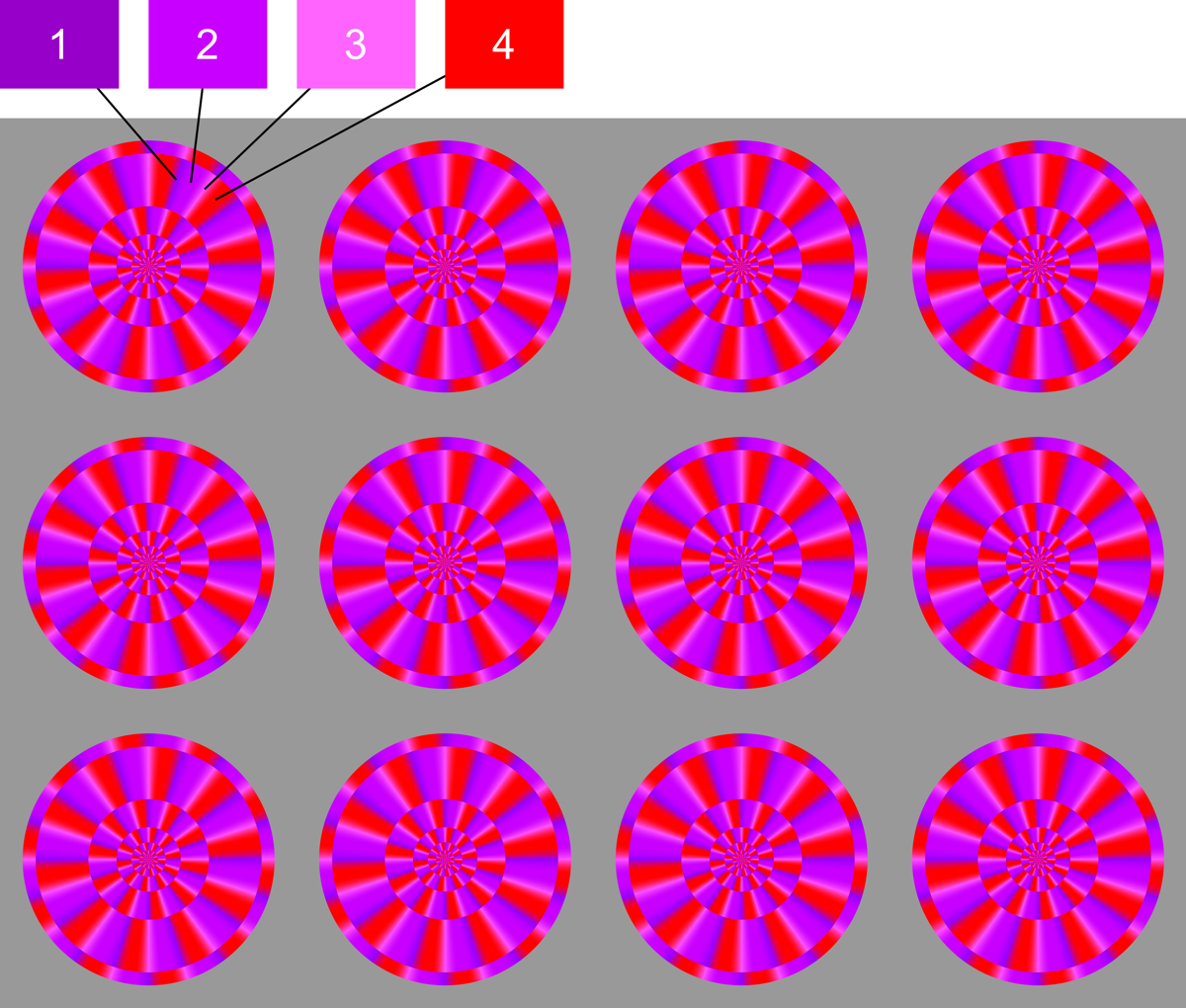
Figure 6 of Kitaoka, A. (2014). Color-dependent motion illusions in stationary
images and their phenomenal dimorphism. Perception, 43(9), 914-925.
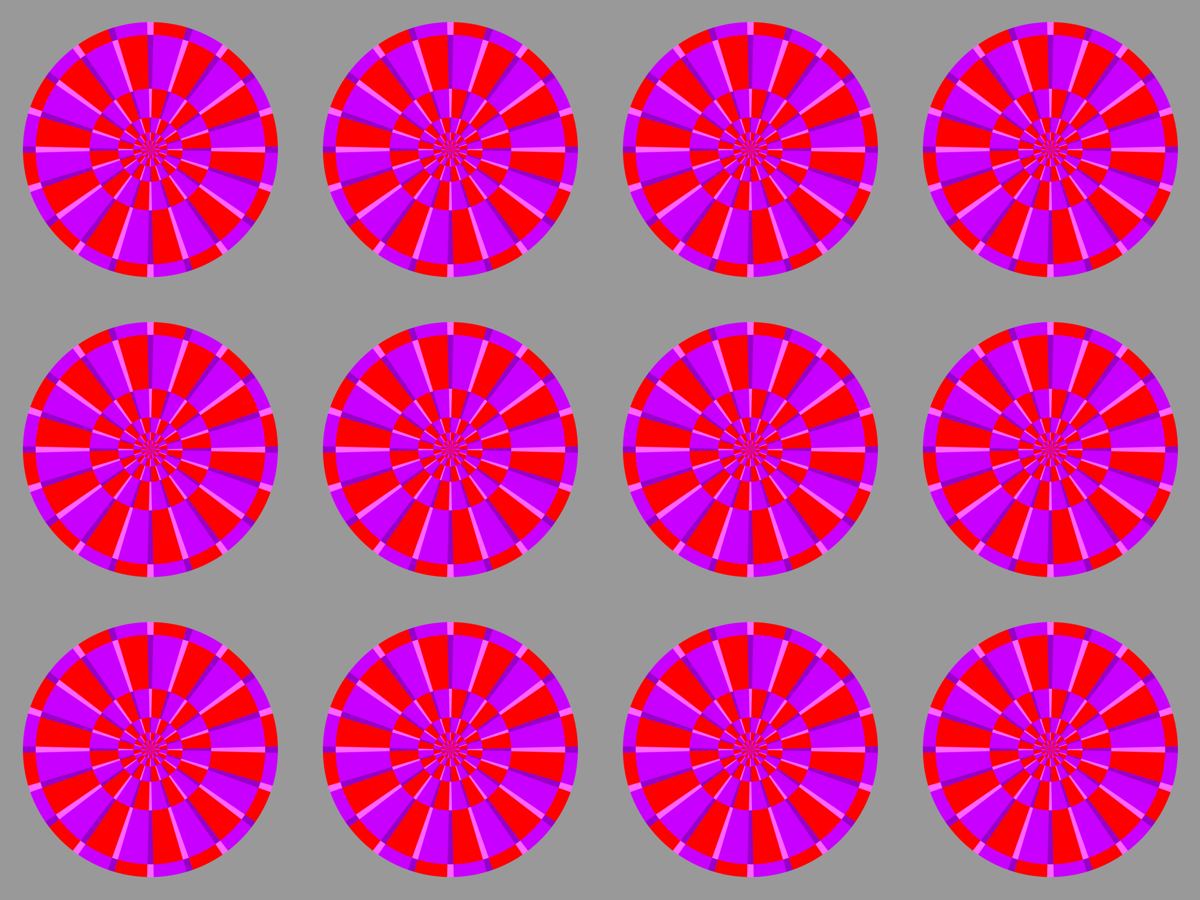
Illusion remains when the image is not blurred.
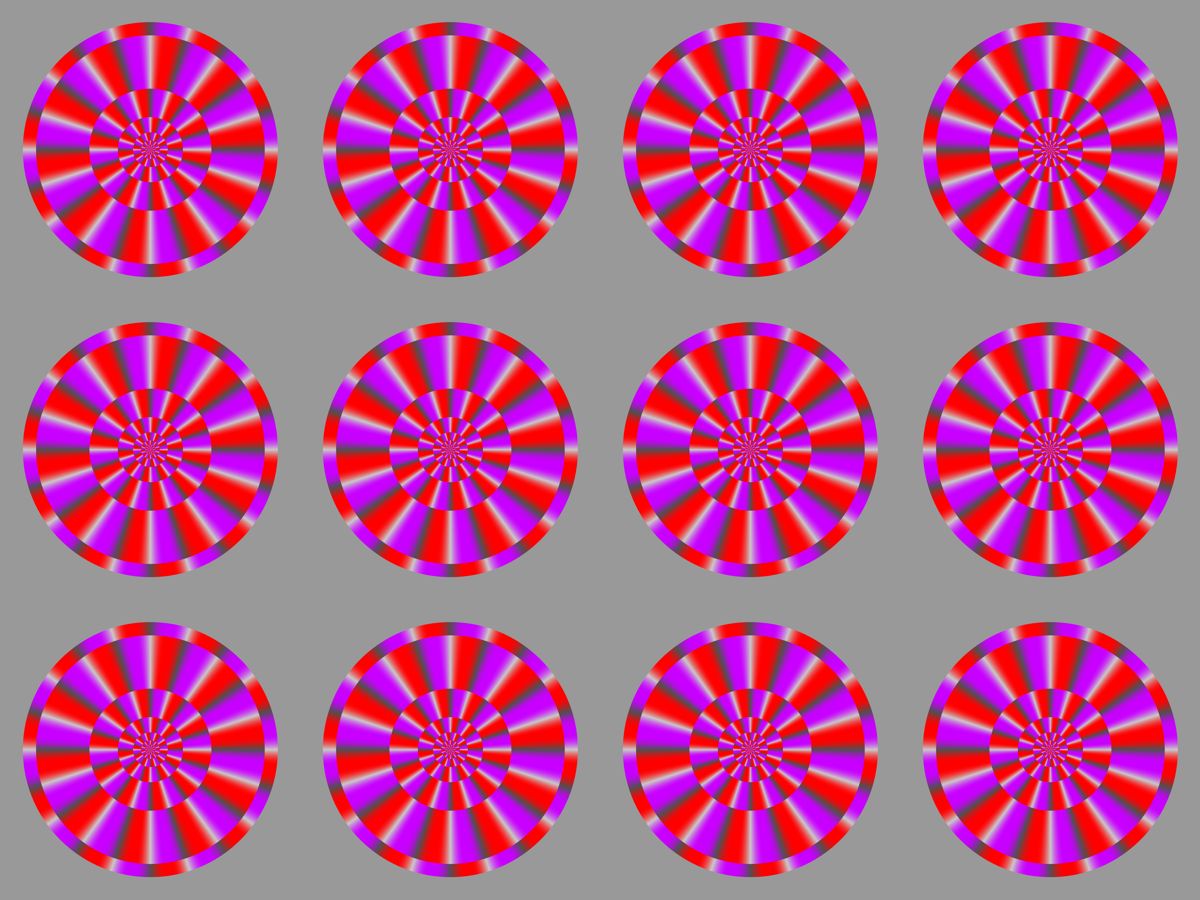
Illusion remains when the darkest and lightest strips are achromatic.
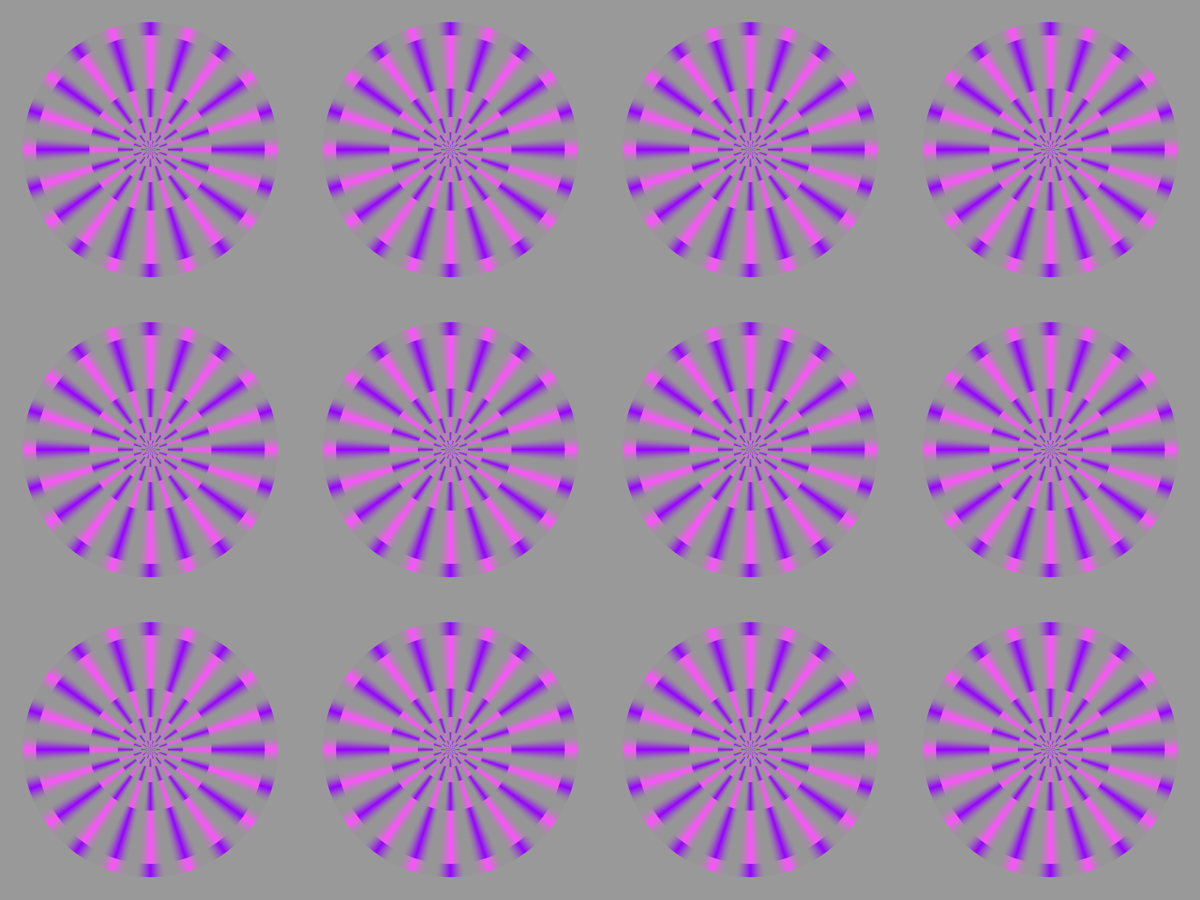
No or weak illusion when the long-wavelength and short-wavelength color
regions are achromatic.
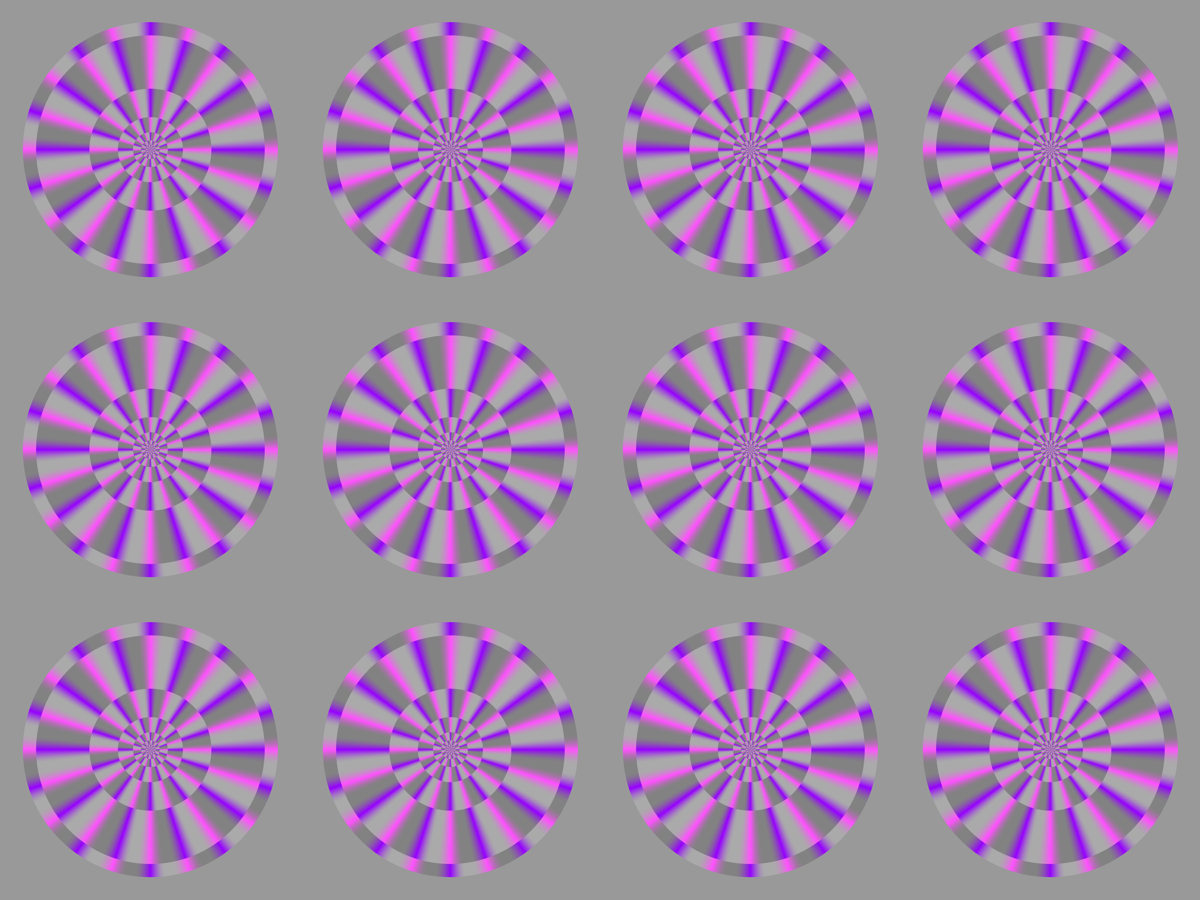
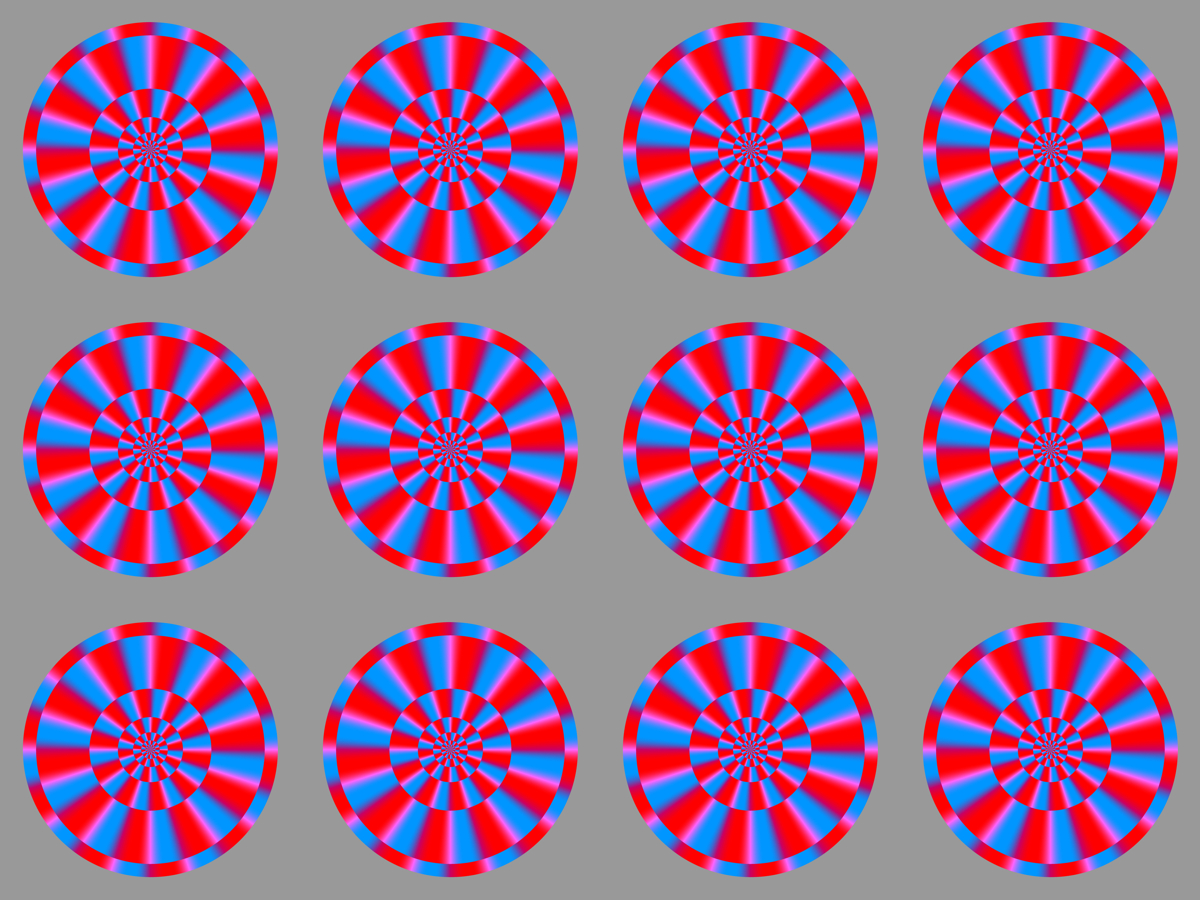
Illusion occurs when red and blue are combined.
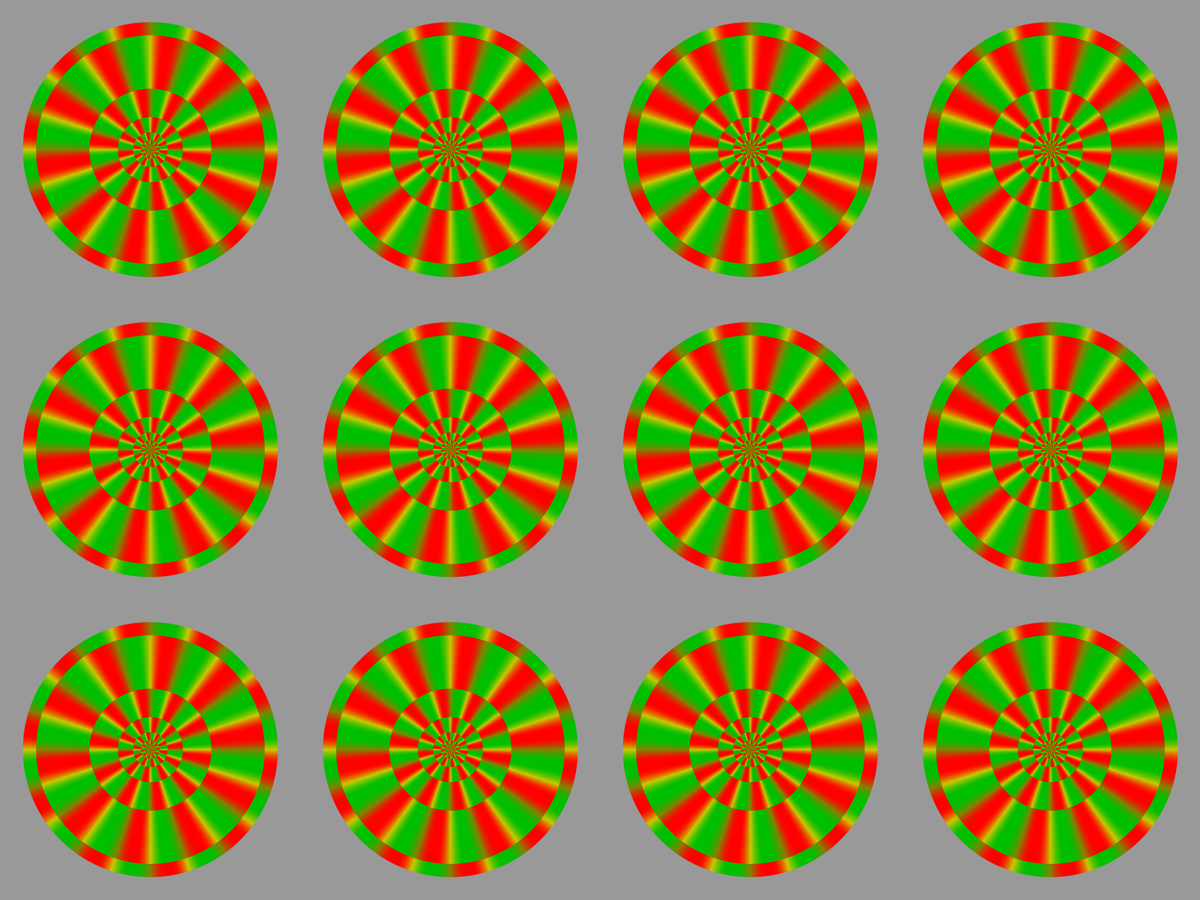
Illusion occurs when red and blue are combined.
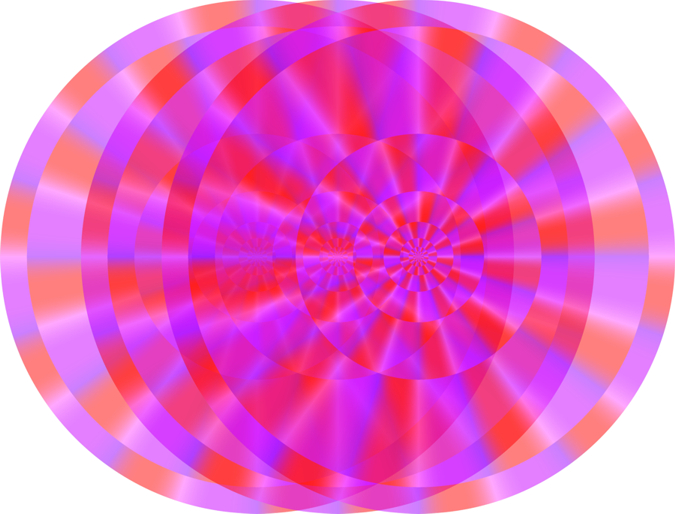
Illusion is triggered by moving images, blinks or eye movements.
Yanaka, K. and Hilano, T. (2011). Mechanical shaking system to enhance "Optimized Fraser–Wilcox Illusion Type V". Perception, 40, ECVP Abstract Supplement, page 171.
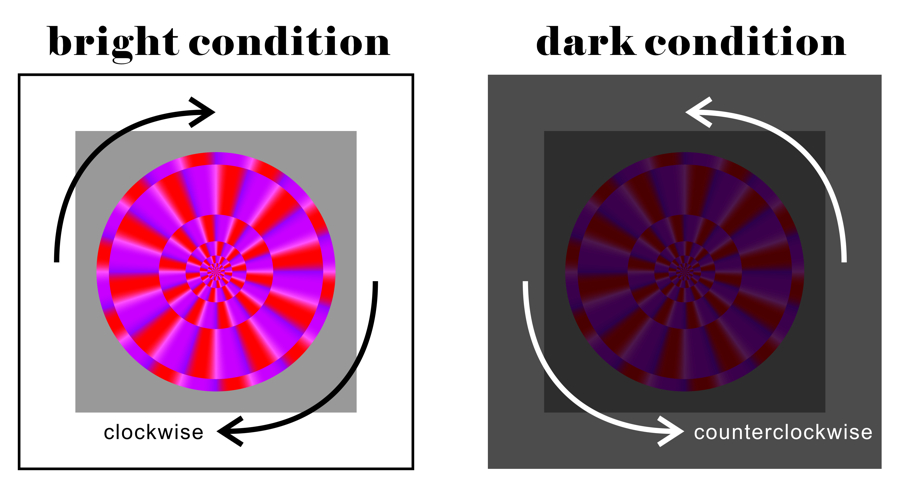
Illusion is reversed depending on luminance or light/dark adaptation.
Kitaoka, A. and Yanaka, H. (2013). Reversal of the color-dependent Fraser-Wilcox illusion under a dark condition. Perception 42 (36th) ECVP (Bremen) Abstract Supplement, page 97 (Poster August 27, 2013). Poster PDF
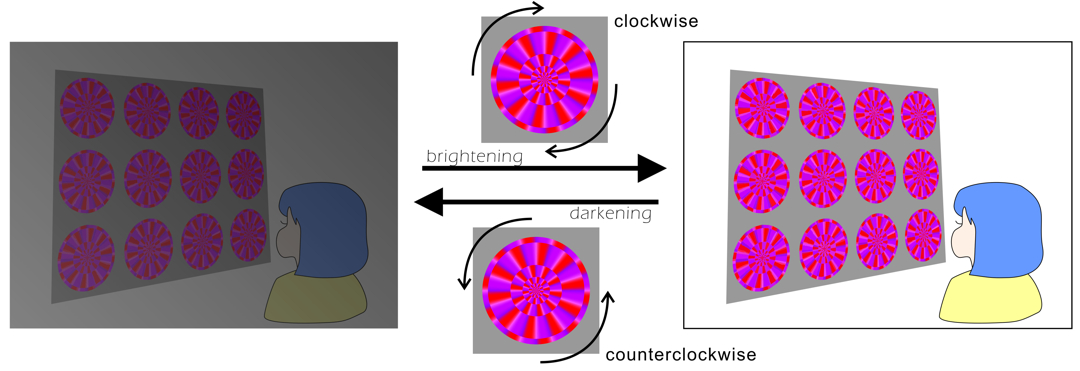
Illusion is reversed depending on the change of luminance.
Kitaoka, A. and Yanaka, H. (2013). Reversal of the color-dependent Fraser-Wilcox illusion under a dark condition. Perception 42 (36th) ECVP (Bremen) Abstract Supplement, page 97 (Poster August 27, 2013). Poster PDF
Twitching illusion
Kitaoka, A. (2014). A new type of the color-dependent Fraser-Wilcox illusion. Perception 43 (37th) ECVP (Belgrade) Abstract Supplement, page 20 (Poster #17 August 25, 2014). Presentation (html) --- Poster (doc) --- Handout (doc) --- Illusion Night Handout (jpeg) --- Illusion Night Questionnaire (docx)

(Ellipses: R255, G0, B0; Background: R140, G140, B140)
Illusory clockwise rotation is observed.

(Ellipses: R255, G0, B0; Background: R200, G0, B255)
Illusory clockwise rotation is observed.
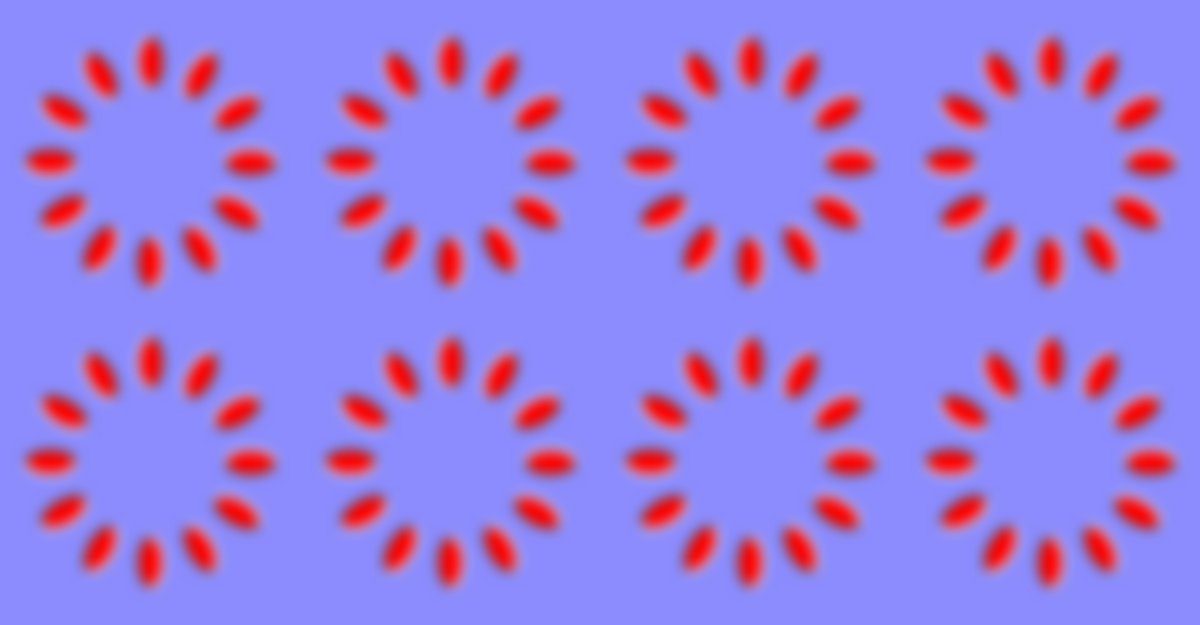
(Ellipses: R255, G0, B0; Background: R140, G140, B255)
Illusory clockwise rotation is observed.

(Ellipses: R255, G0, B0; Background: R0, G180, B255)
Illusion appears to be weak.
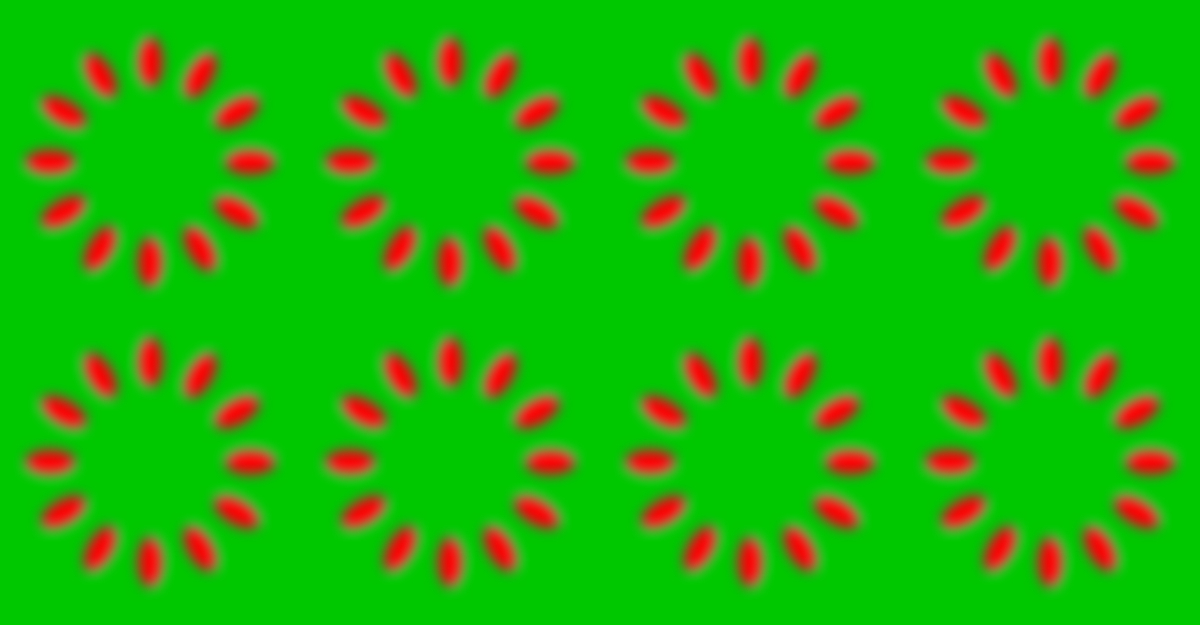
(Ellipses: R255, G0, B0; Background: R0, G200, B0)
Illusion appears to be weak.

(Ellipses: R255, G0, B0; Background: R140, G140, B0)
Illusory clockwise rotation is observed.

(Ellipses: R255, G0, B0; Background: R200, G130, B130)
Illusory clockwise rotation is observed.
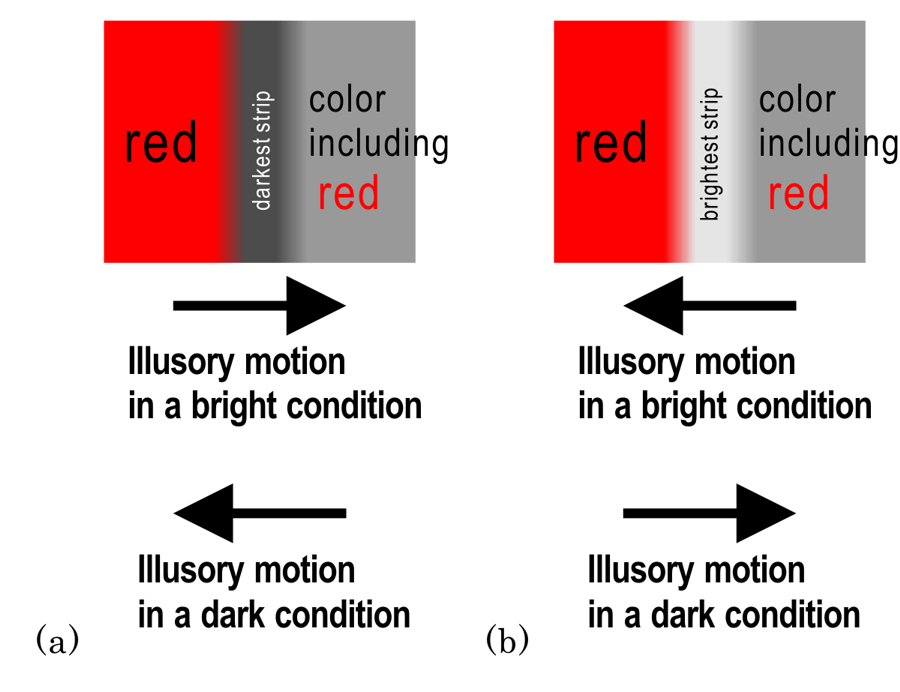
Red might play an important role in the twitching illusion.
a related phenomenon
Fading-dependent motion illusion
Kitaoka, A. (2014). Motion illusion induced by color changes. 10th Asia-Pacific Conference on Vision (APCV), Sunport Takamatsu, Takamatsu, Japan, (Poster July 20, 2014 (P2-16)). Poster MS-Word doc file --- Movie demos
(GIF)
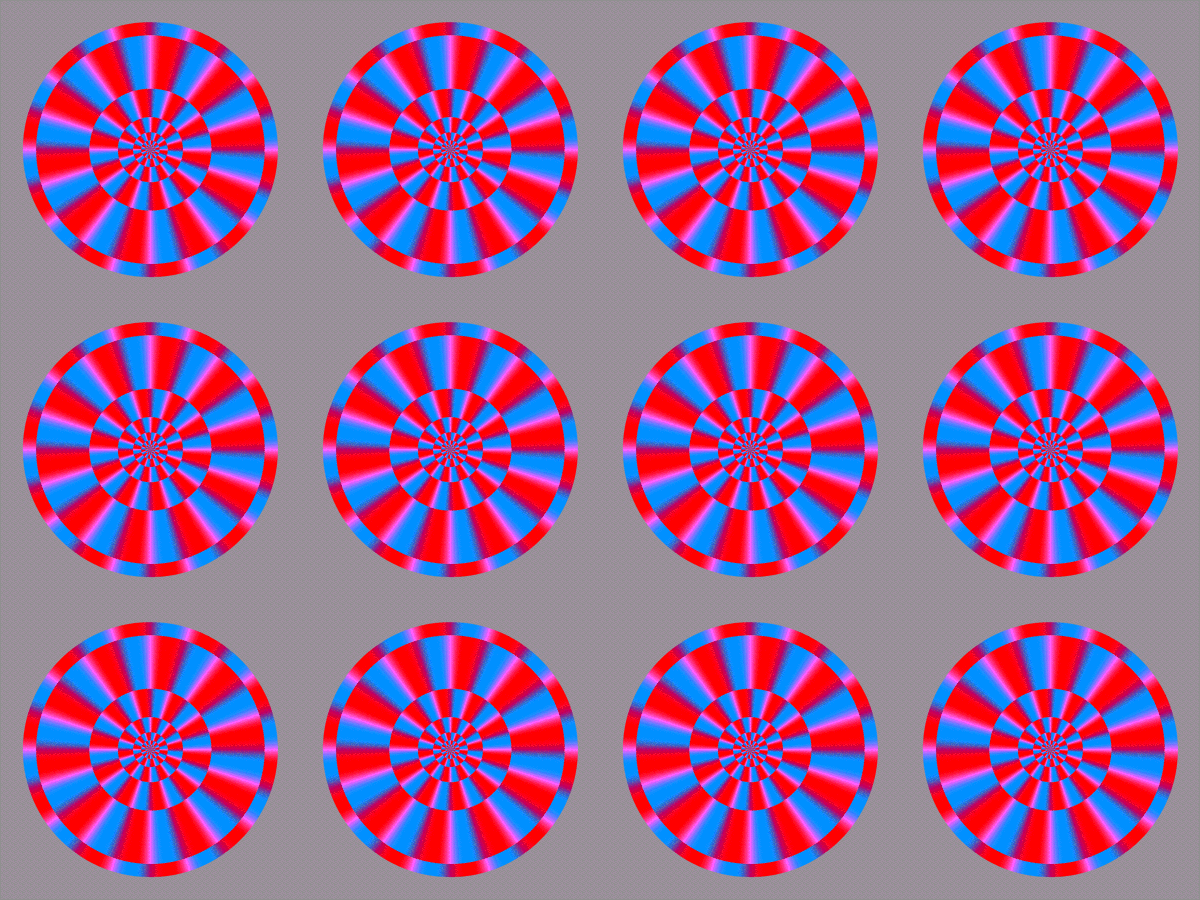
(Flash)
rotredcyandisks3-m01.swf
(MOV)
Each disk appears to rotate clockwise during fading-in while counterclockwise during fading-out.
Copyright Akiyoshi Kitaoka 2013 (February 19)
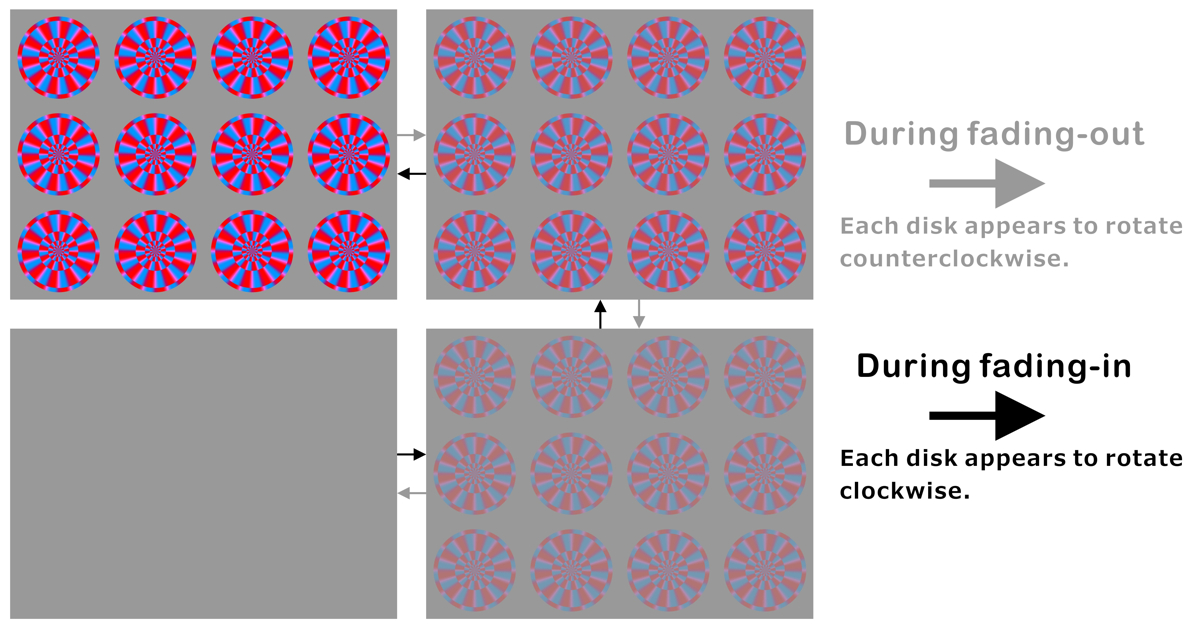
Copyright Akiyoshi Kitaoka 2014 (July 17)
Color change-dependent motion illusion #1
(GIF)
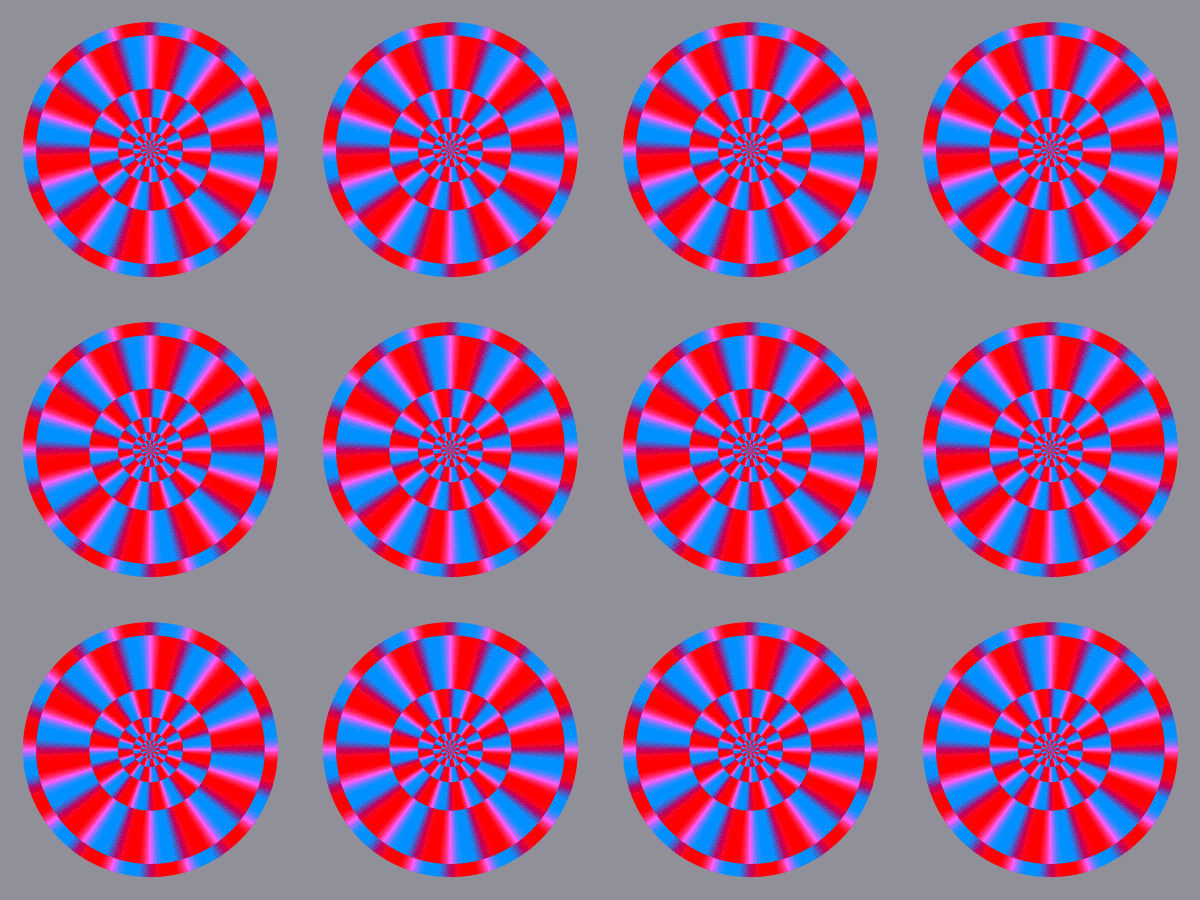
(FLASH)
rotredcyandisks3-m04.swf
(MOV)
(Blue RGB = 0, 150, 255)
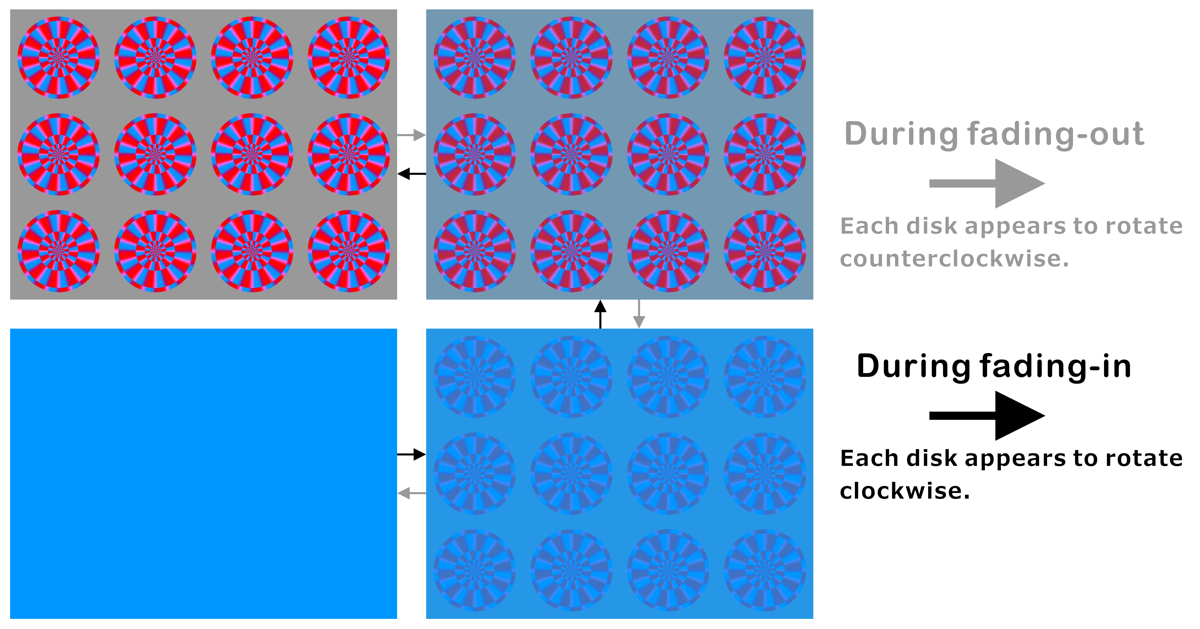
Copyright Akiyoshi Kitaoka 2014 (July 17)
Color change-dependent motion illusion #2
(GIF)
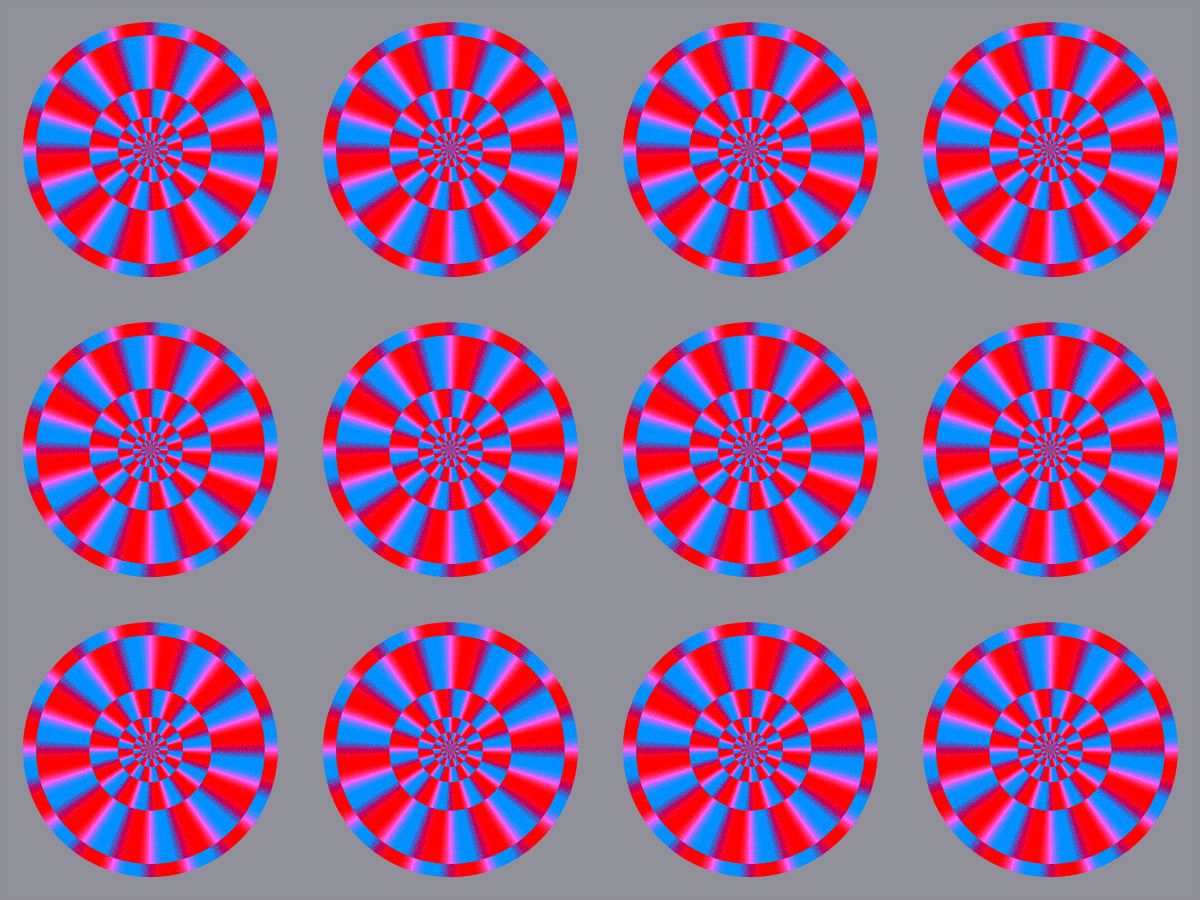
(FLASH)
rotredcyandisks3-m05.swf
(MOV)
(Red RGB = 255, 0, 0)
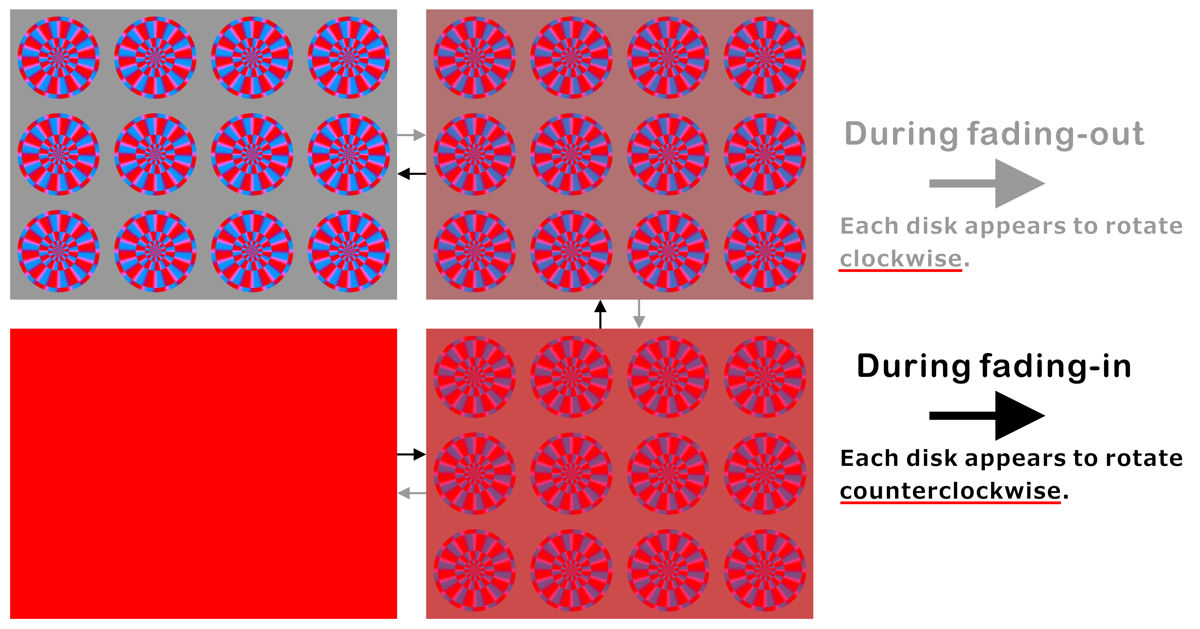
Copyright Akiyoshi Kitaoka 2014 (July 17)
Achromatic version does not work.
(GIF)
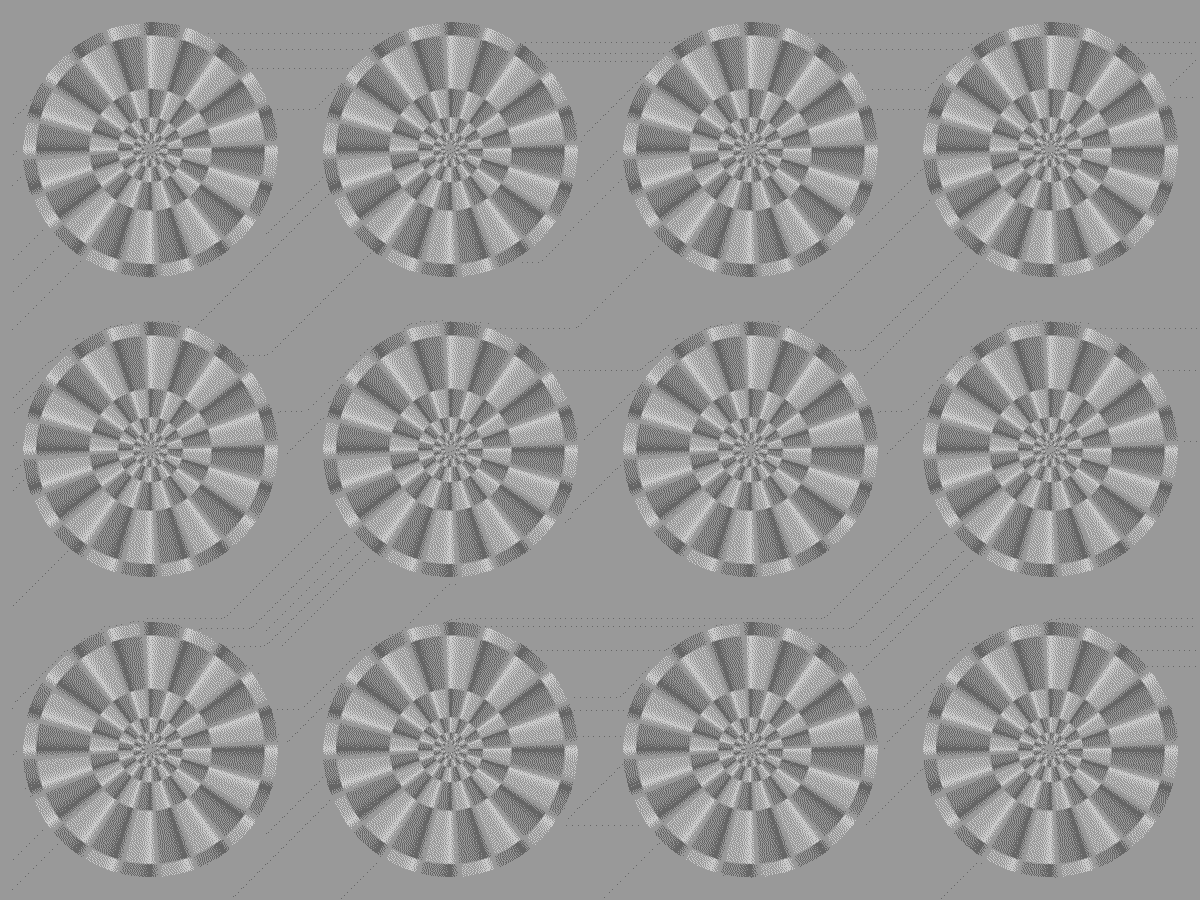
(Flash)
rotredpurpledisksG2-m01.swf
(GIF)
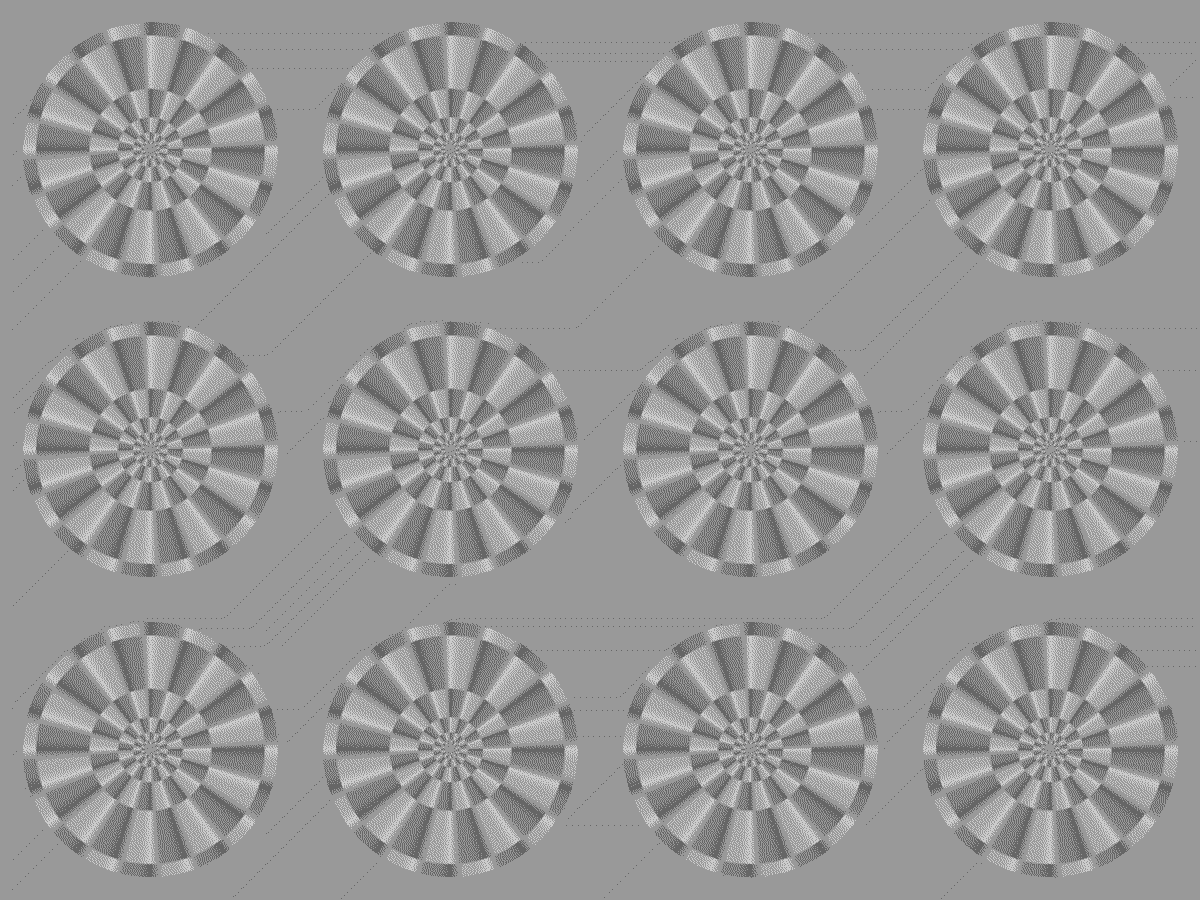
(Flash)
rotredpurpledisksG2-m02.swf
Little or no illusion
Copyright Akiyoshi Kitaoka 2014 (March 26)
(GIF)
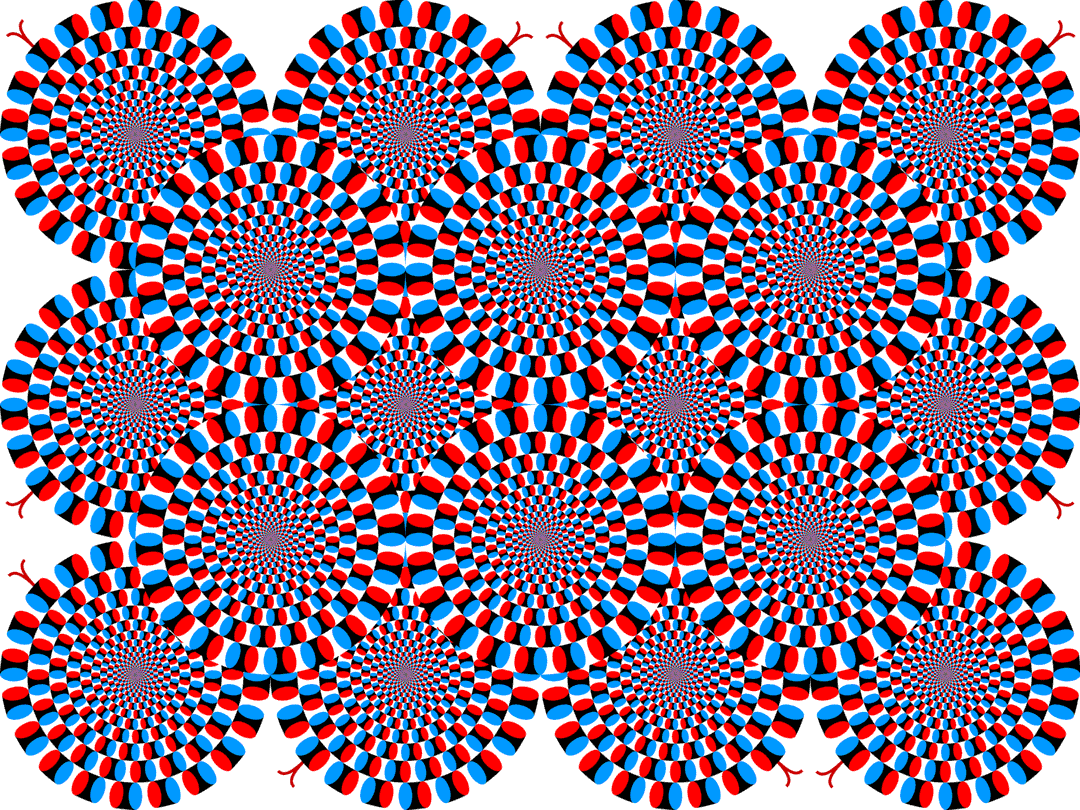
"On-off rotating snakes: red and sky blue #1"
When fading in, each disk appears to rotate in the direction: black, red, white, sky blue, black. The direction is reversed when fading out.
Copyright Akiyoshi Kitaoka 2013 (April 30) (GIF July 15, 2014)
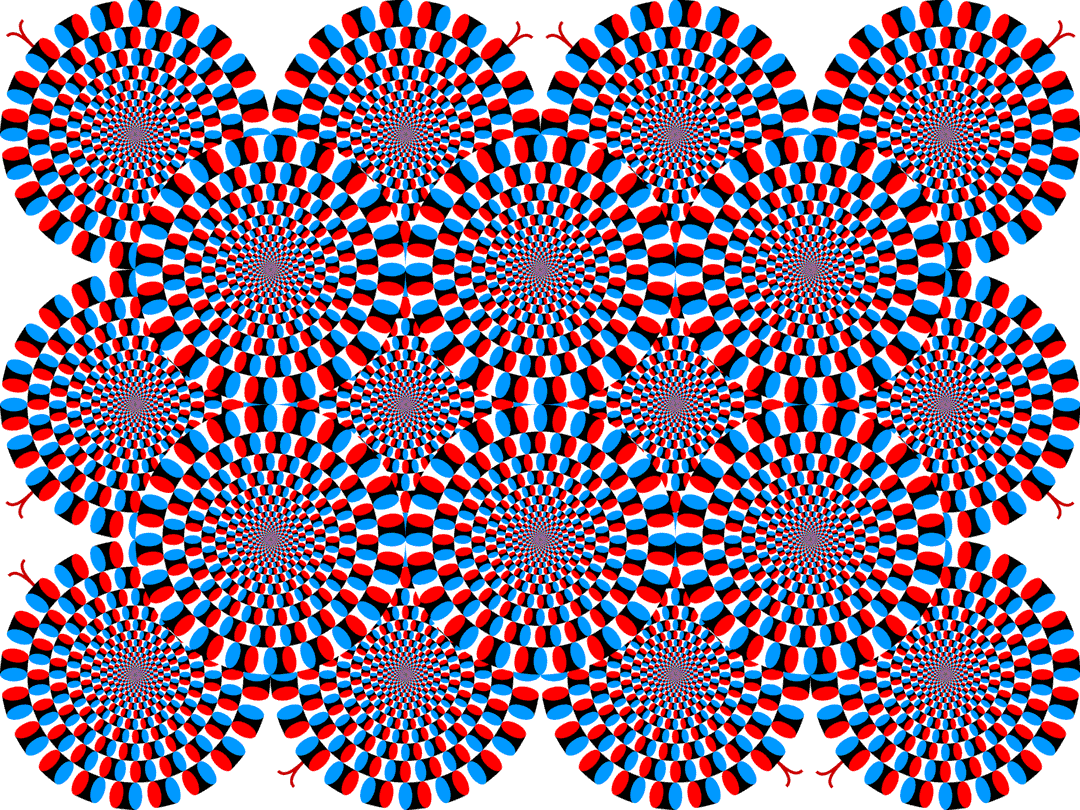
"On-off rotating snakes: red and sky blue #2"
When fading in, each disk appears to rotate in the direction: black, sky blue, white, red, black. The direction is reversed when fading out.
Copyright Akiyoshi Kitaoka 2013 (April 30) (GIF July 15, 2014)
(Flash)
"On-off rotating snakes: red and sky blue #1"
When fading in, each disk appears to rotate in the direction: black, red, white, sky blue, black. The direction is reversed when fading out.
Copyright Akiyoshi Kitaoka 2013 (April 30)
"On-off rotating snakes: red and sky blue #2"
When fading in, each disk appears to rotate in the direction: black, sky blue, white, red, black. The direction is reversed when fading out.
Copyright Akiyoshi Kitaoka 2013 (April 30)
"Rotating Jasmina's cake by fade-in and -out"
Each cake appears to rotate clockwise in fade-in phases while it appears to rotate counterclockwise in fade-out phases.
Copyright Akiyoshi Kitaoka 2013 (April 17)
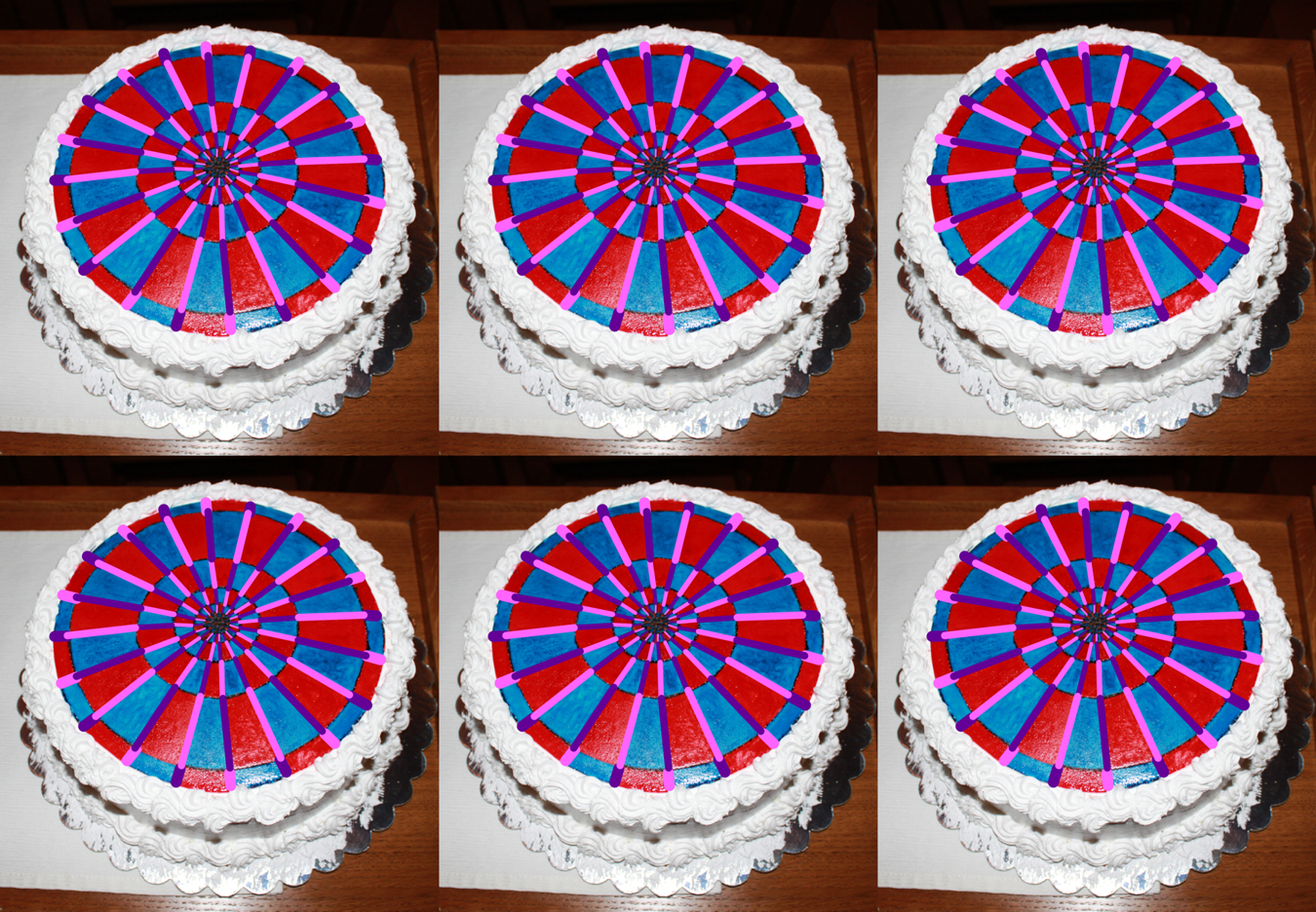
"Rotating Jasmina's cake"
Each cake appears to rotate clockwise on a PC display, while it appears to rotate counterclockwise in a print under dark illumination.
Copyright Akiyoshi Kitaoka 2013 (April 15)
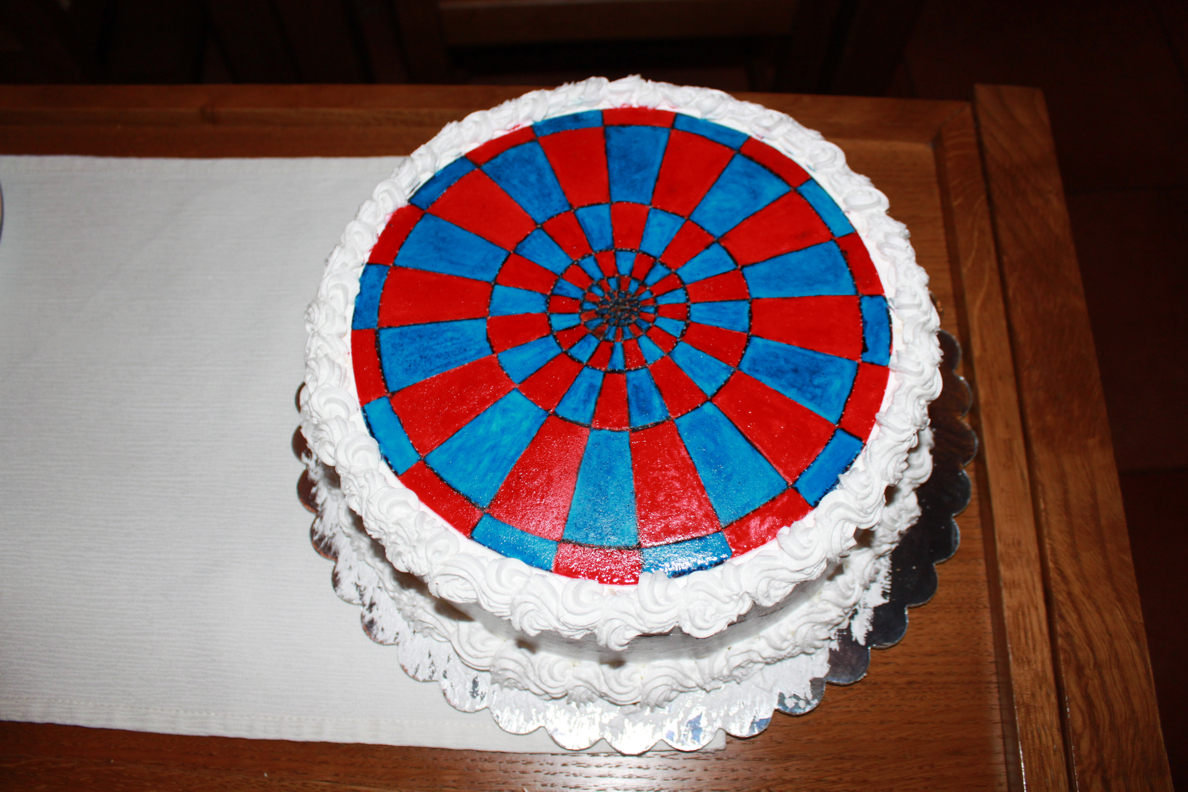
There is a similarity in stimulus configuration between Type IIa and reverse phi (or Gregory and Heard's (1983) phenomenal phenomena), and I made Type IIb to match Anstis and Rogers' (1975) "phi movement".
"Luminance-change-dependent motion illusion"
Reverse phi
Anstis S M, 1970 "Phi movement as a subtraction process" Vision Research 10 1411-1430
Gregory and Heard's (1983) phenomenal phenomena
Gregory R L, Heard P F, 1983 "Visual dissociations of movement, position, and stereo depth: Some phenomenal phenomena" Quarterly Journal of Experimental Psychology 35A 217-237
Anstis and Rogers' (1975) "phi movement"
Anstis S M, Rogers B J, 1975 "Illusory reversal of visual depth and movement during changes of contrast" Vision Research 15 957-961
Formula of the luminance-change-dependent motion illusion:
The relationship between luminance changes and illusory motion
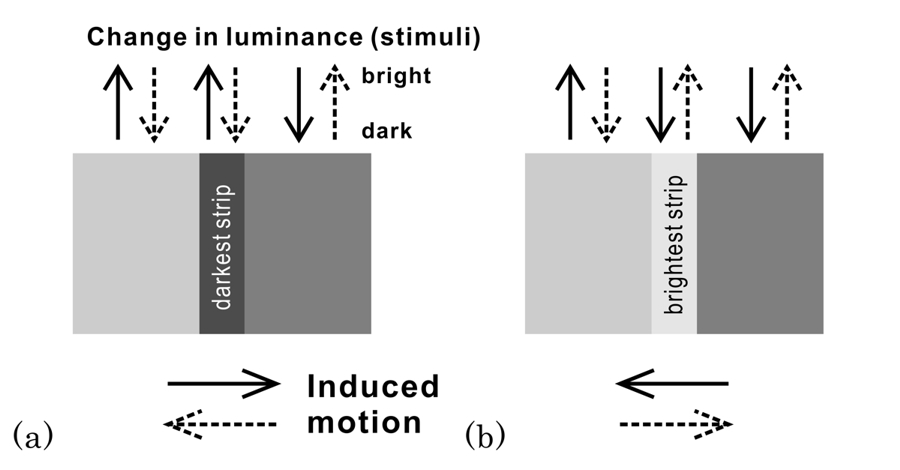
Kitaoka, A. (2006) Configurational coincidence
among six phenomena: A comment on van Lier and Csatho (2006). Perception,
35, 799-806. ![]() animations
animations
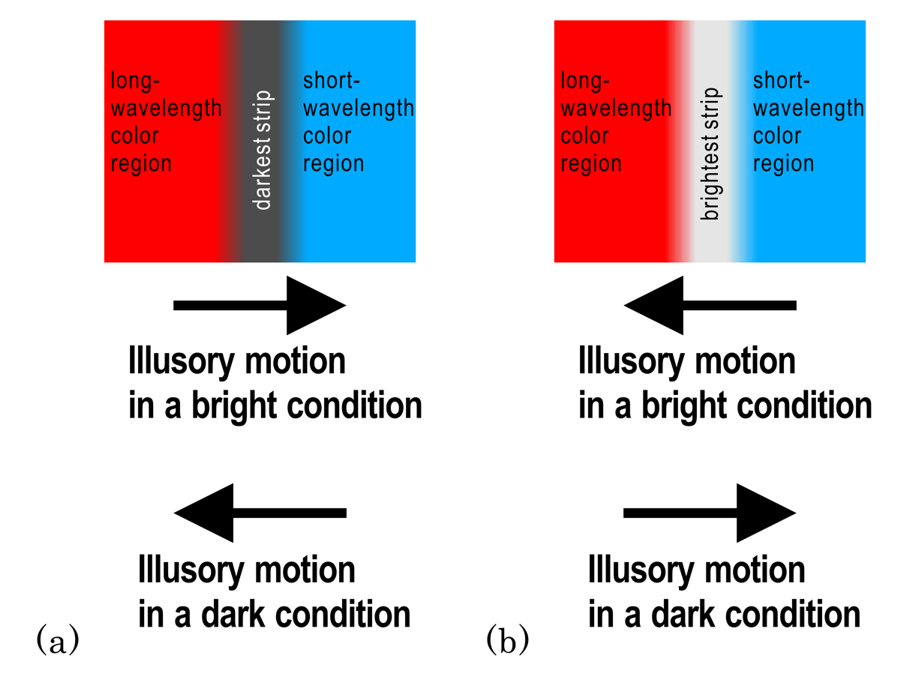

Illusion is reversed depending on the change of luminance: brightening-induced illusory motion and darkening-induced one.
Kitaoka, A. and Yanaka, H. (2013). Reversal of the color-dependent Fraser-Wilcox illusion under a dark condition. Perception 42 (36th) ECVP (Bremen) Abstract Supplement, page 97 (Poster August 27, 2013). Poster PDF
Speculation
Assumption: Some triggers such as blinks, eye movement or swaying the image turn off the input of visual images and then turn on it.
Illusion in a bright condition
(1) The brightening-induced illusory motion is predomoinant over the darkening-induced one for unkown reason.
(2) According to unknown reason, red is the slower starter in brightness after turning-on than blue.
(3) This delayed change induces illusory motion according to the formula of the luminance-change-dependent motion illusion.
Illusion in a dark condition
(1) The darkening-induced illusory motion is predomoinant over the brightening-induced one for unkown reason.
(2) According to the Purkinje shift, blue decays more slowly than red during turning-off.
(3) This delayed change induces illusory motion according to the formula of the luminance-change-dependent motion illusion.
Thank you !
International Symposium on Psychological vs Mathematical Approaches to Optical Illusion
Date: March 4-6, 2015
Place: Nakano Campus of Meiji University
Organizers: Meiji Institute for Advanced Study of Mathematical Sciences
JST, CREST Project on Computational Illusion
http://compillusion.mims.meiji.ac.jp/conf/index.html
Invited speakers: [Abstracts]
Stuart Anstis (Dept of Psychology, University of California, San Diego, USA)
Simone Gori (Developmental and Cognitive Neuroscience lab, Department of General Psychology, University of Padua; Developmental Neuropsychology Unit, Scientific Institute “E. Media,”, Italy)
Makoto Ichikawa (Department of Psychology, Chiba University, Japan)
Masanori Idesawa (UEC Museum of Communications; UEC Tokyo, Japan)
Hiroyuki Ito (Faculty of Design, Kyushu University, Japan)
Akiyoshi Kitaoka (Department of Psychology, Ritsumeikan University, Japan)
Rob van Lier (Donders Institute for Brain Cognition and Behaviour, Radboud University Nijmegen, The Netherland )
Baingio Pinna (Department of Humanities and Social Sciences, University of Sassari, Italy)
Brian Rogers (Department of Experimental Psychology, University of Oxford, Oxford, UK; Department of Psychology, St Petersburg State University, St Petersburg, Russia.)
Sergio Roncato (Dipartimento di Psicologia Generale, Universita di Padova, Italia)
Arthur Shapiro (American University Washington D.C., USA)
Kohske Takahashi (Research Center for Advanced Science and Technology, the University of Tokyo, Japan)
Dejan Todorović (Laboratory of Experimental Psychology, Department of Psychology, University of Belgrade, Serbia)
Chair: Kokichi Sugihara (Meiji University)
Vice Chair: Akiyoshi Kitaoka (Ritsumeikan Univeristy)
Organizing Committee Members:
Yasushi Yamaguchi (University of Tokyo)
Kazuhiro Ueda (University of Tokyo)
Homei Miyashita (Meiji University)
Akiyasu Tomoeda (Musashino University)
Haruaki Fukuda (University of Tokyo)
Hideki Todo (University of Tokyo)
Hiroshi Ueda (University of Tokyo)
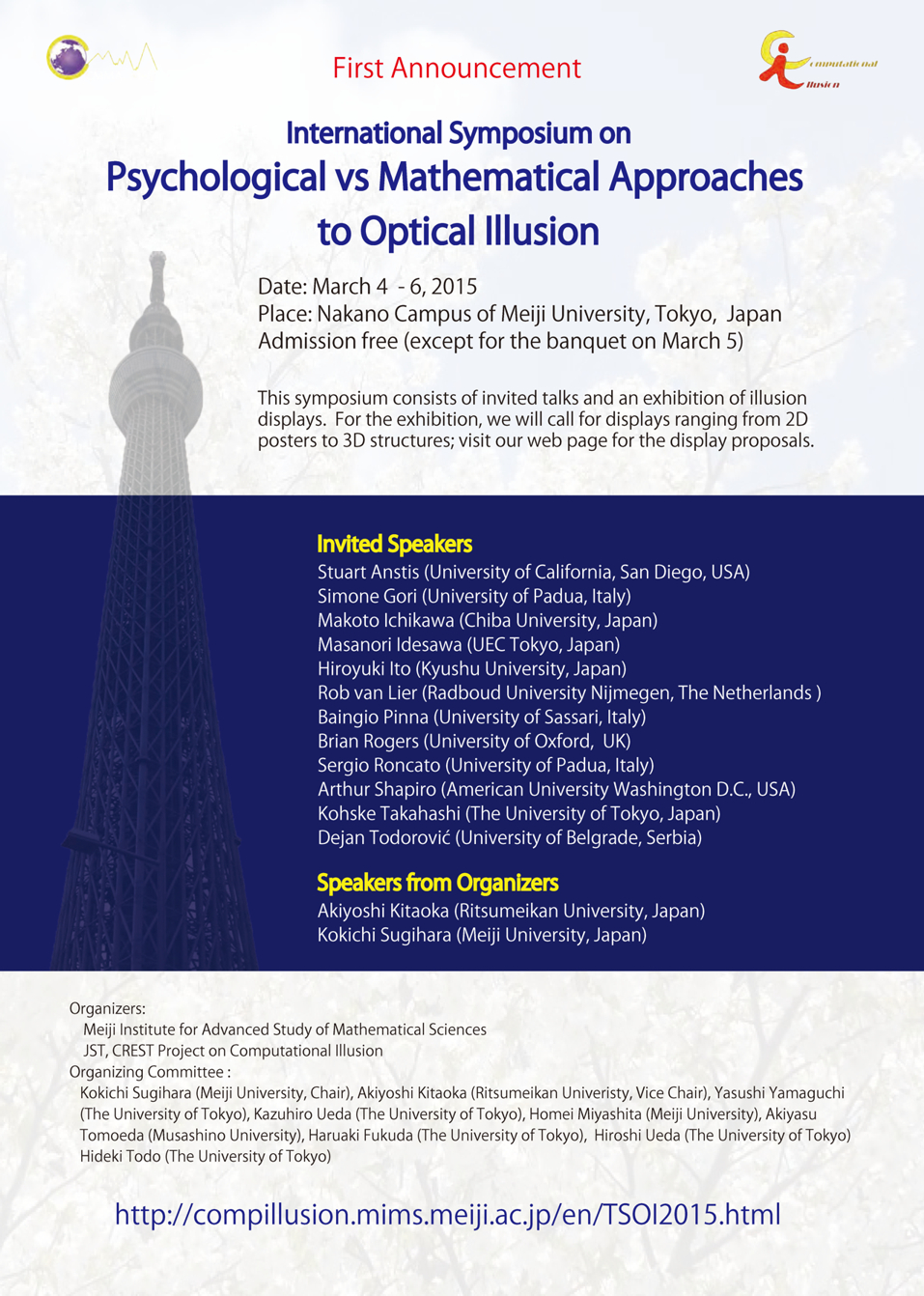
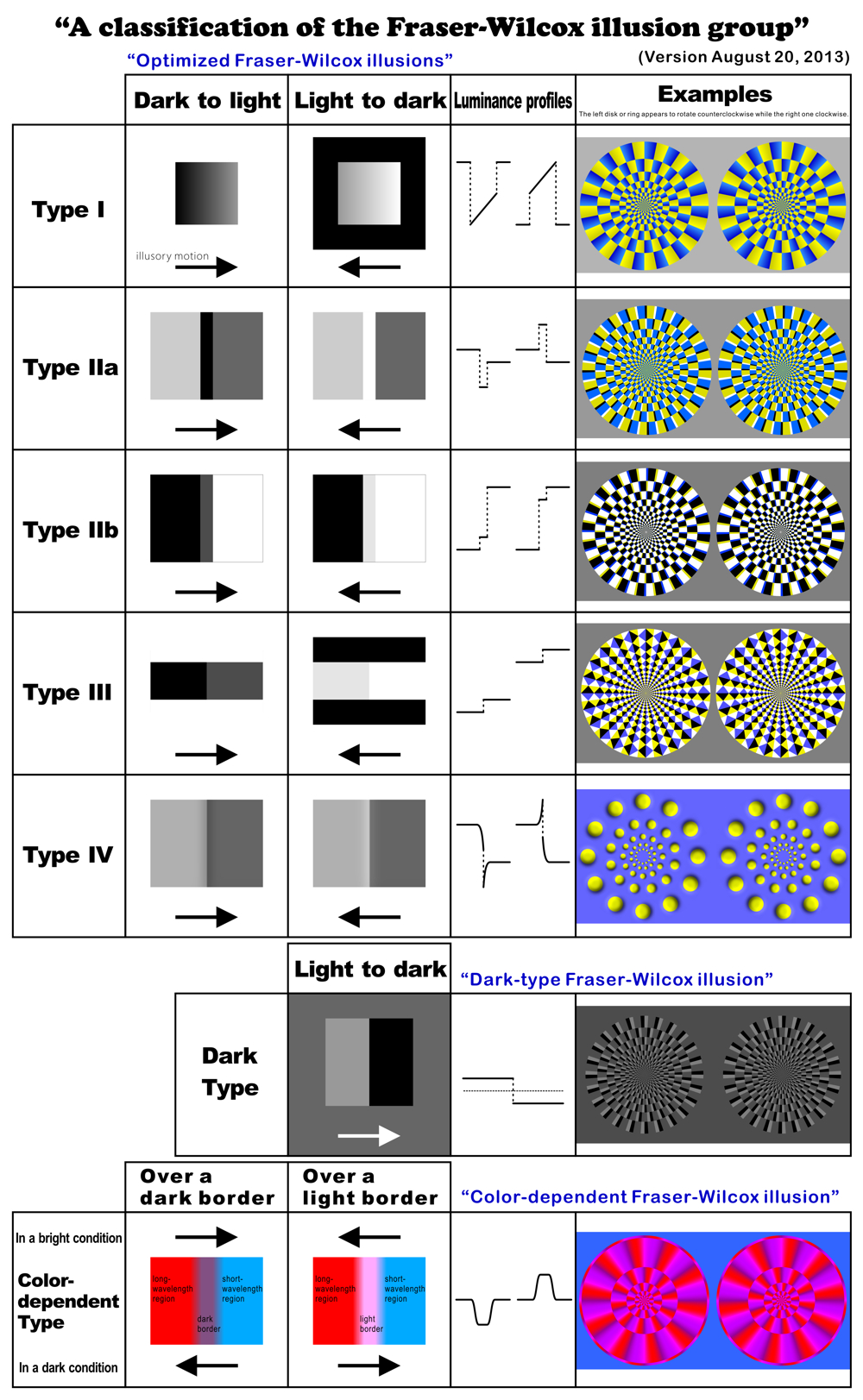
Abstract:
Fraser and Wilcox (1979) presented a motion illusion in a stationary
image and Kitaoka and Ashida (2003) devised a new pattern to enhance the
illusion. "Rotating snakes" is one of the applied works. Although the
Fraser-Wilcox illusion chiefly depends on luminance,
its color-dependent variant was suggested by Kitaoka (2010). The
color-dependent Fraser-Wilcox illusion is produced with a combination of
four elemental parts: long-wavelength part, short-wavelength part, dark
part, and bright part. Kitaoka and Yanaka (2013)
reported that the direction of illusory motion is reversed under a dim
or dark illumination, suggesting a critical role of rods. These studies
were published and discussed in Kitaoka (2014). The present talk
reports further progress in the study on the color-dependent
motion illusion.